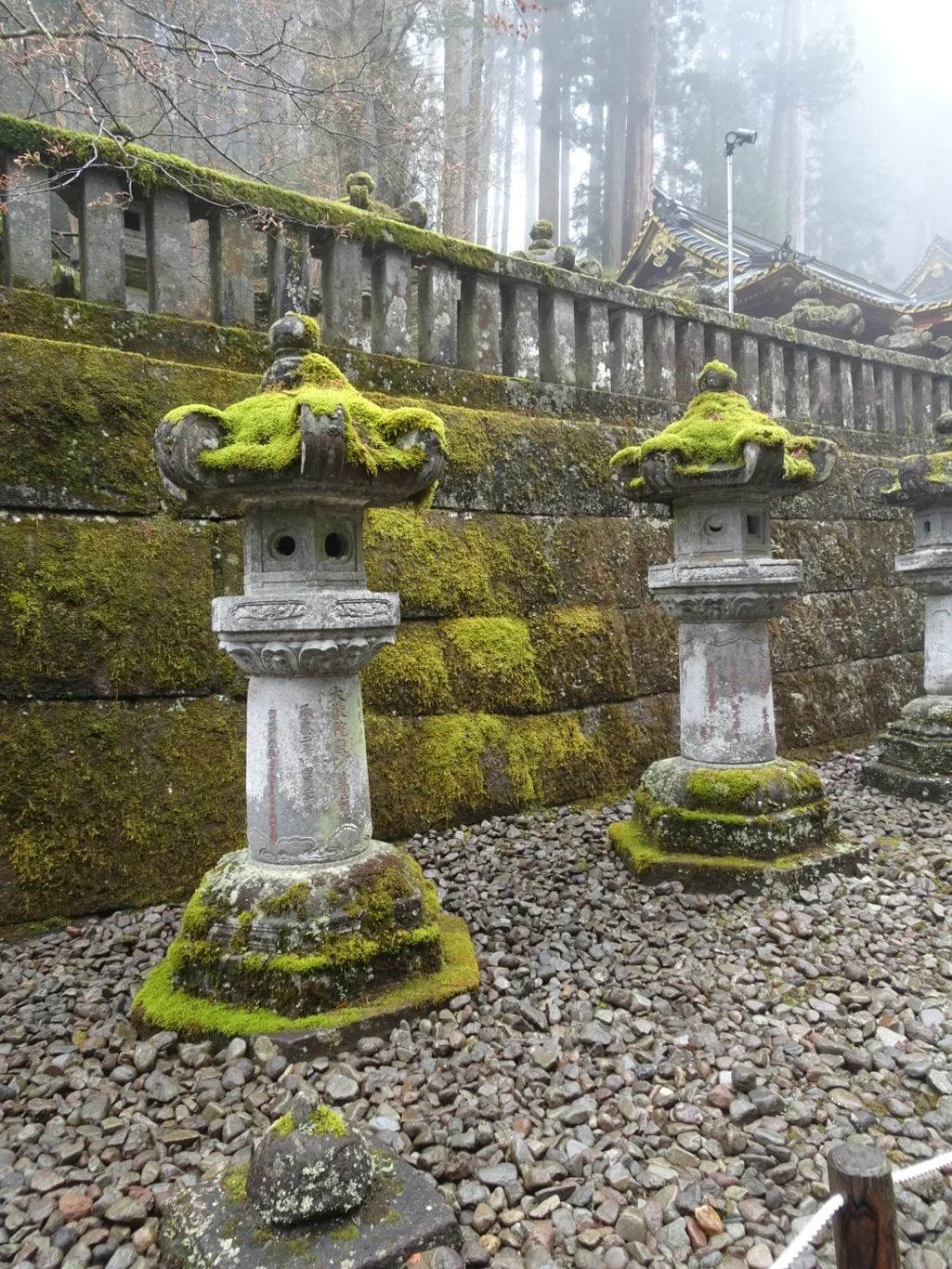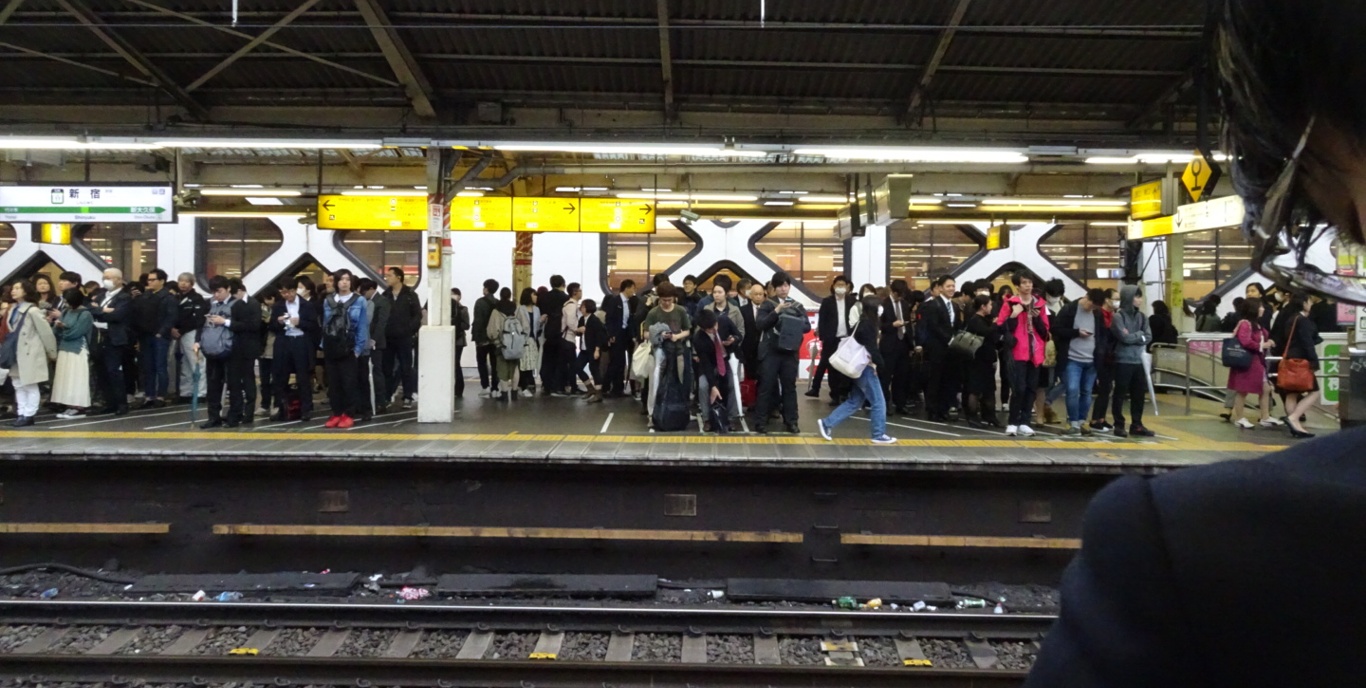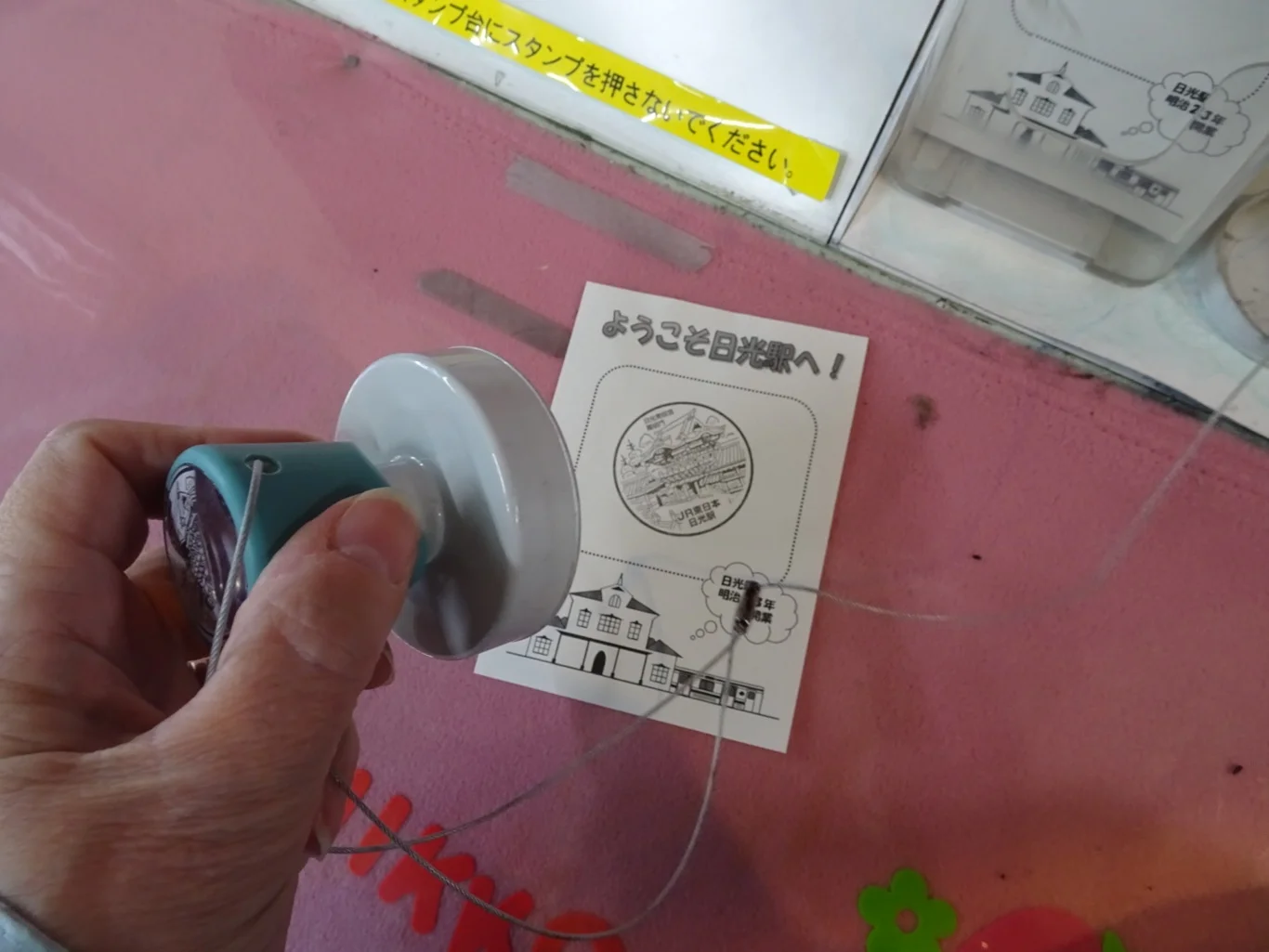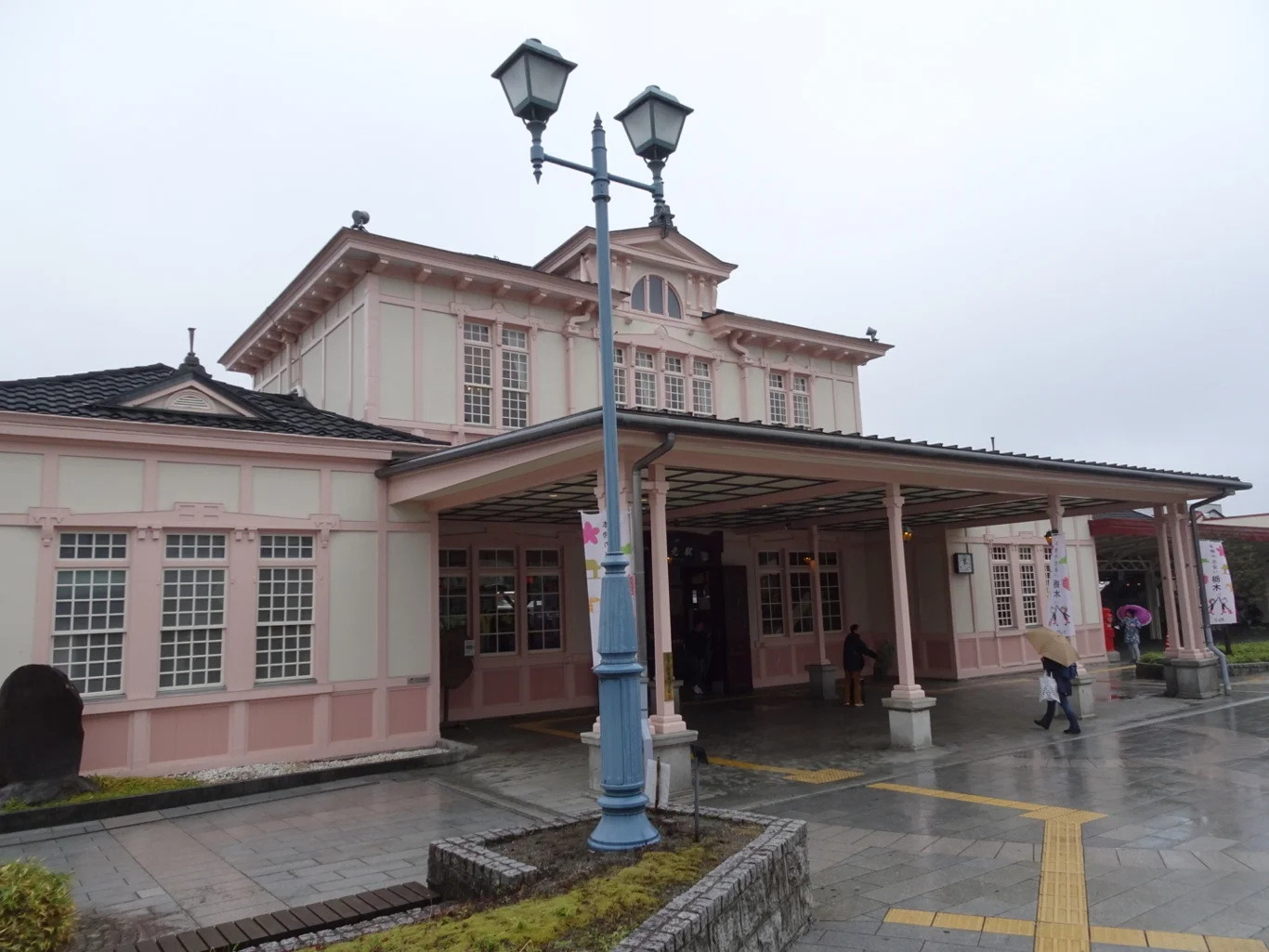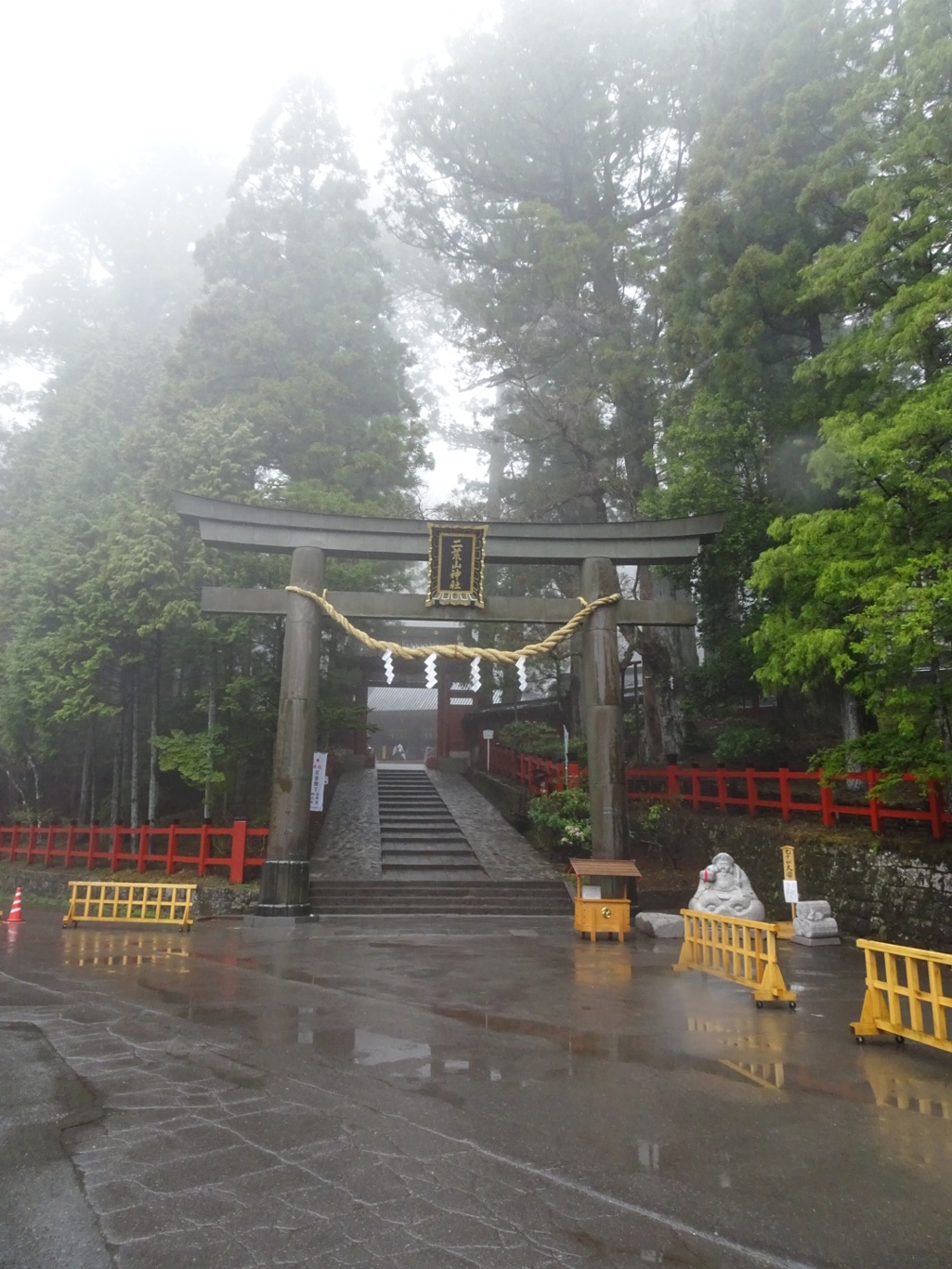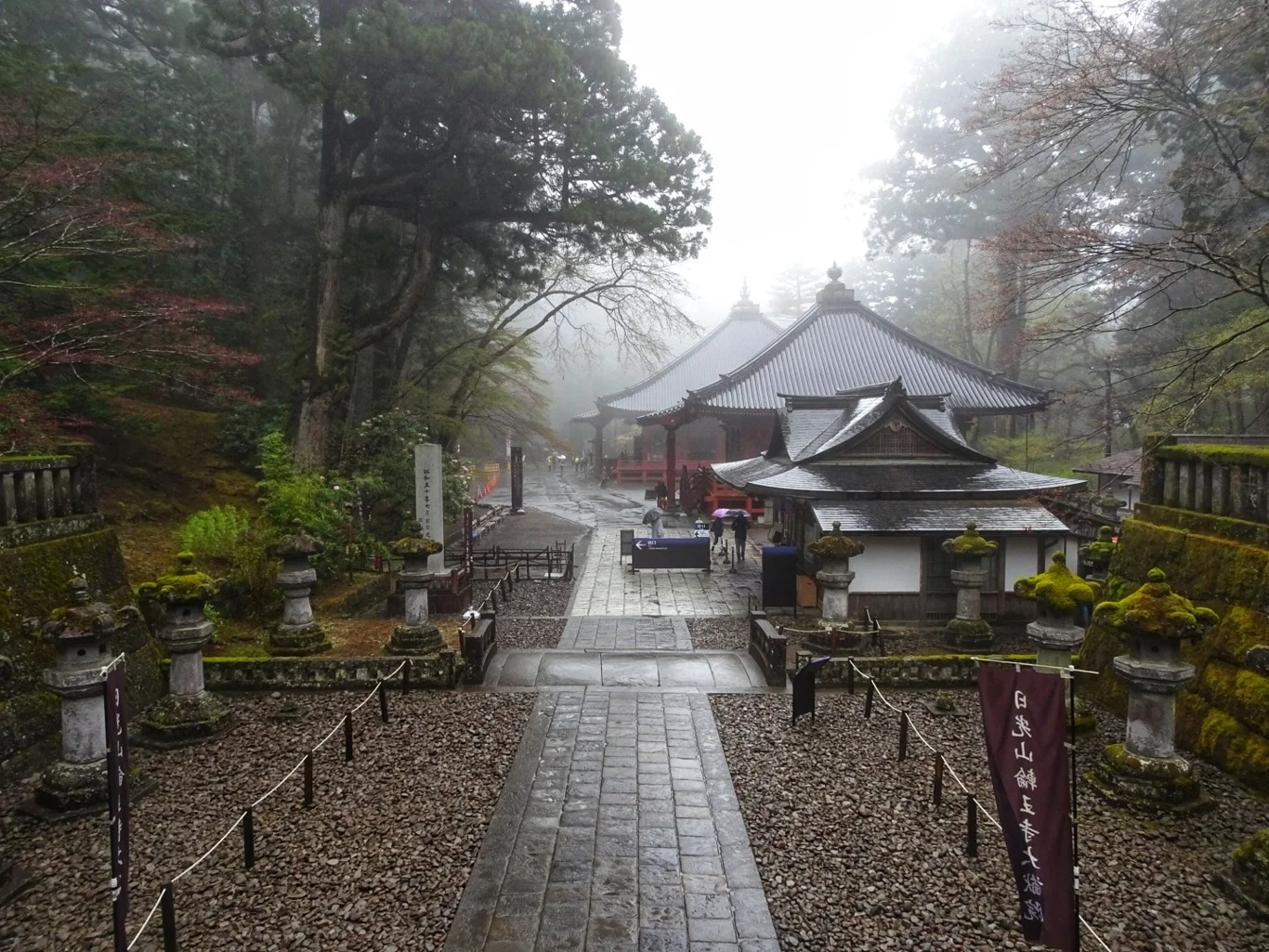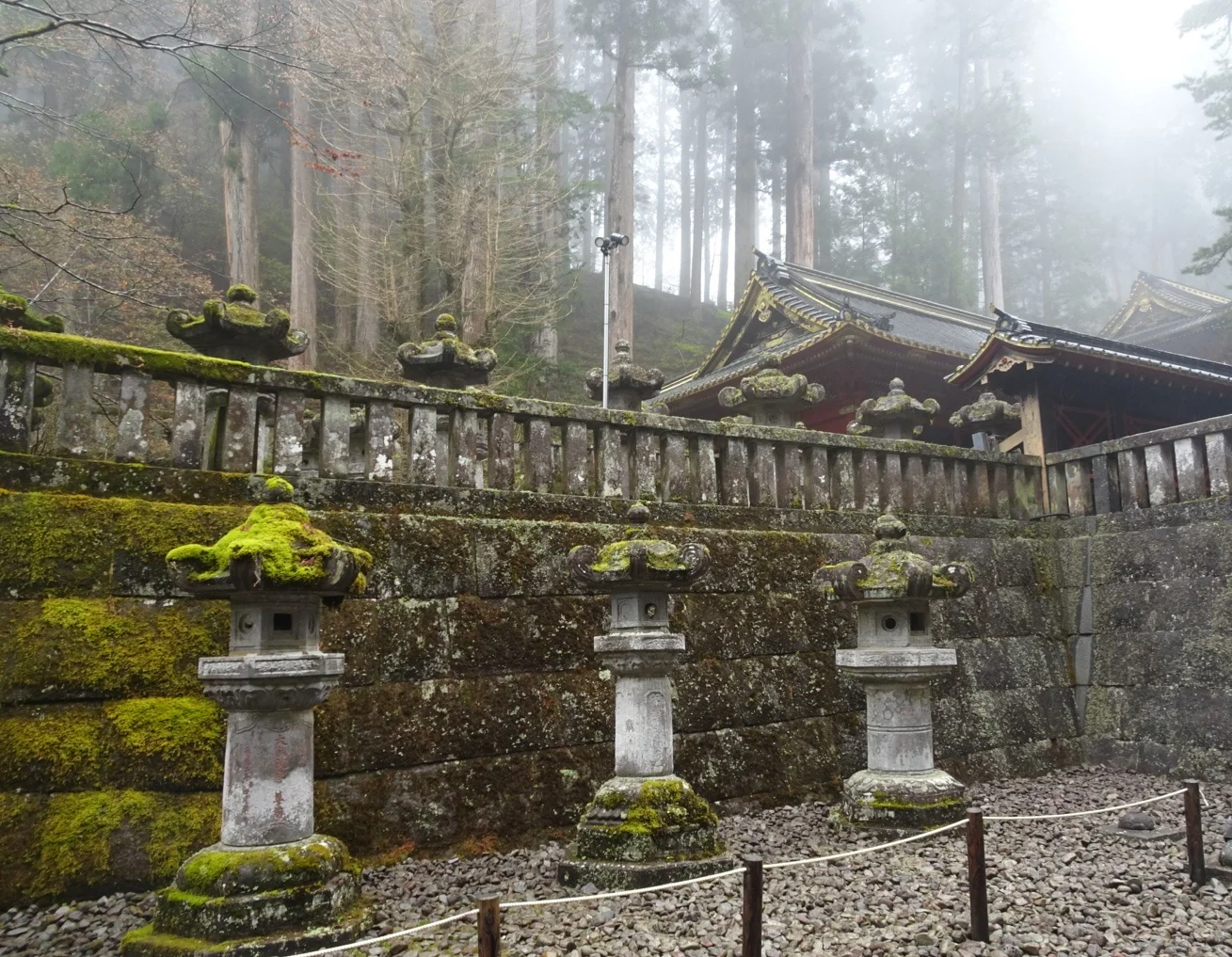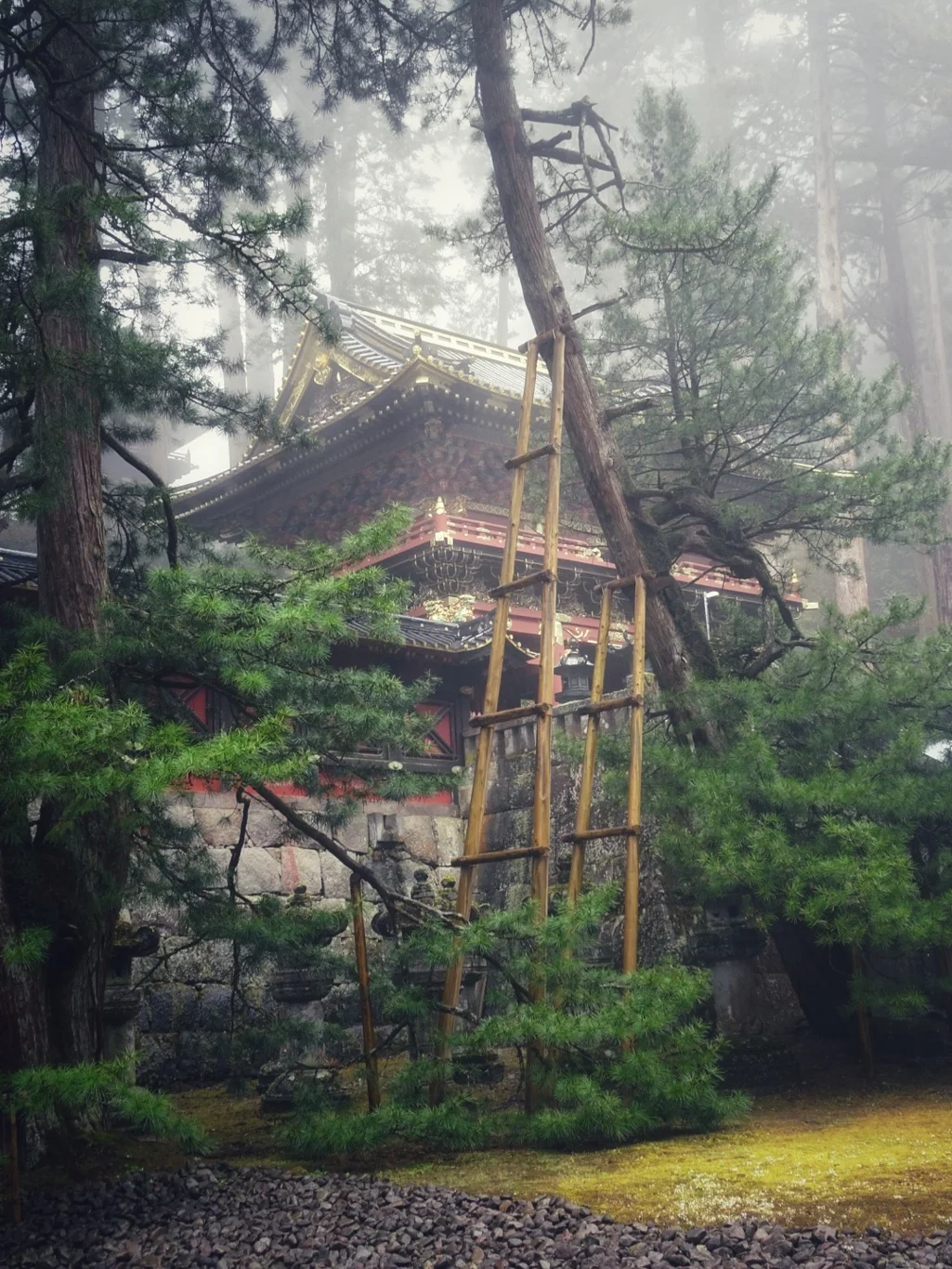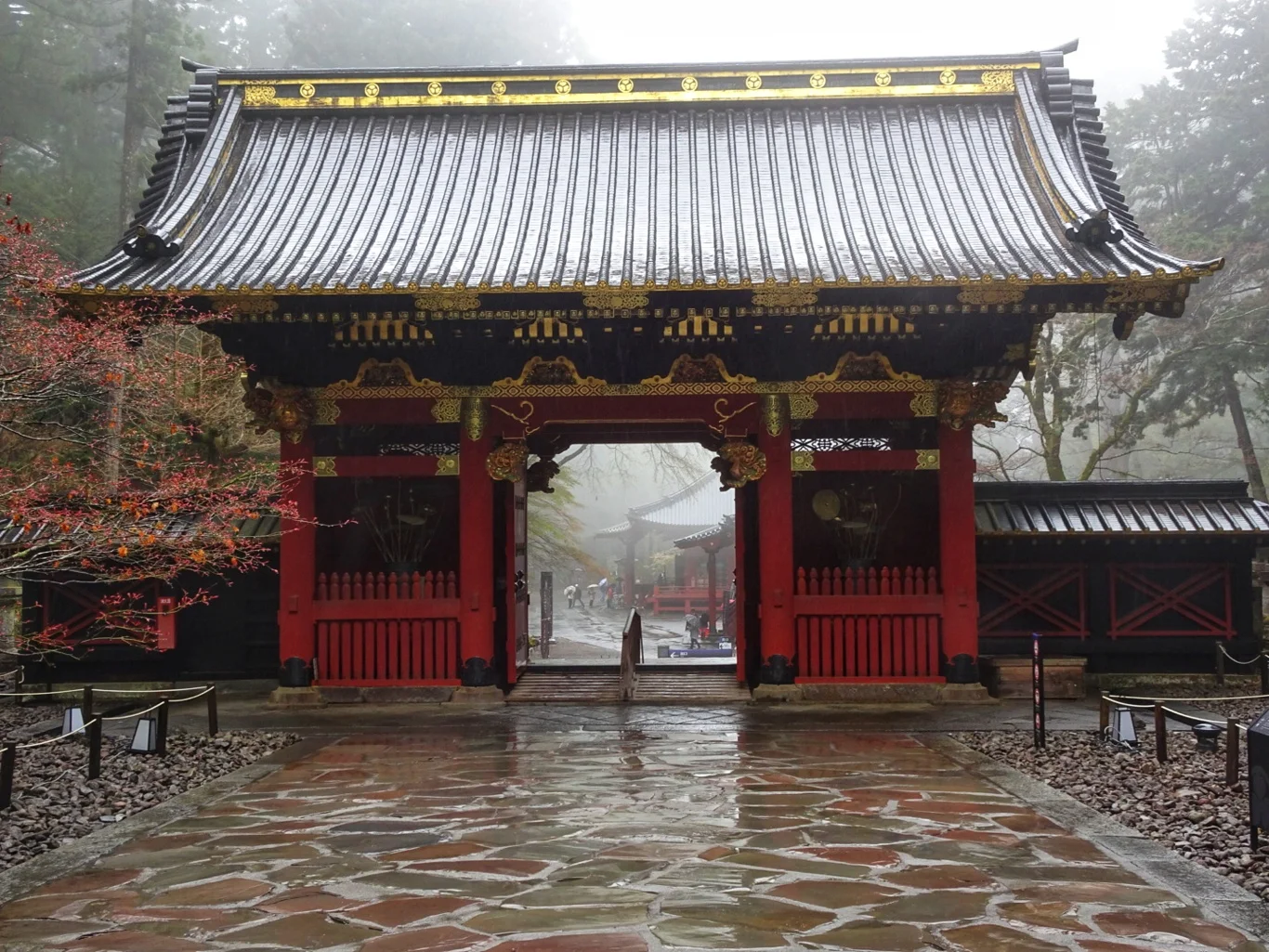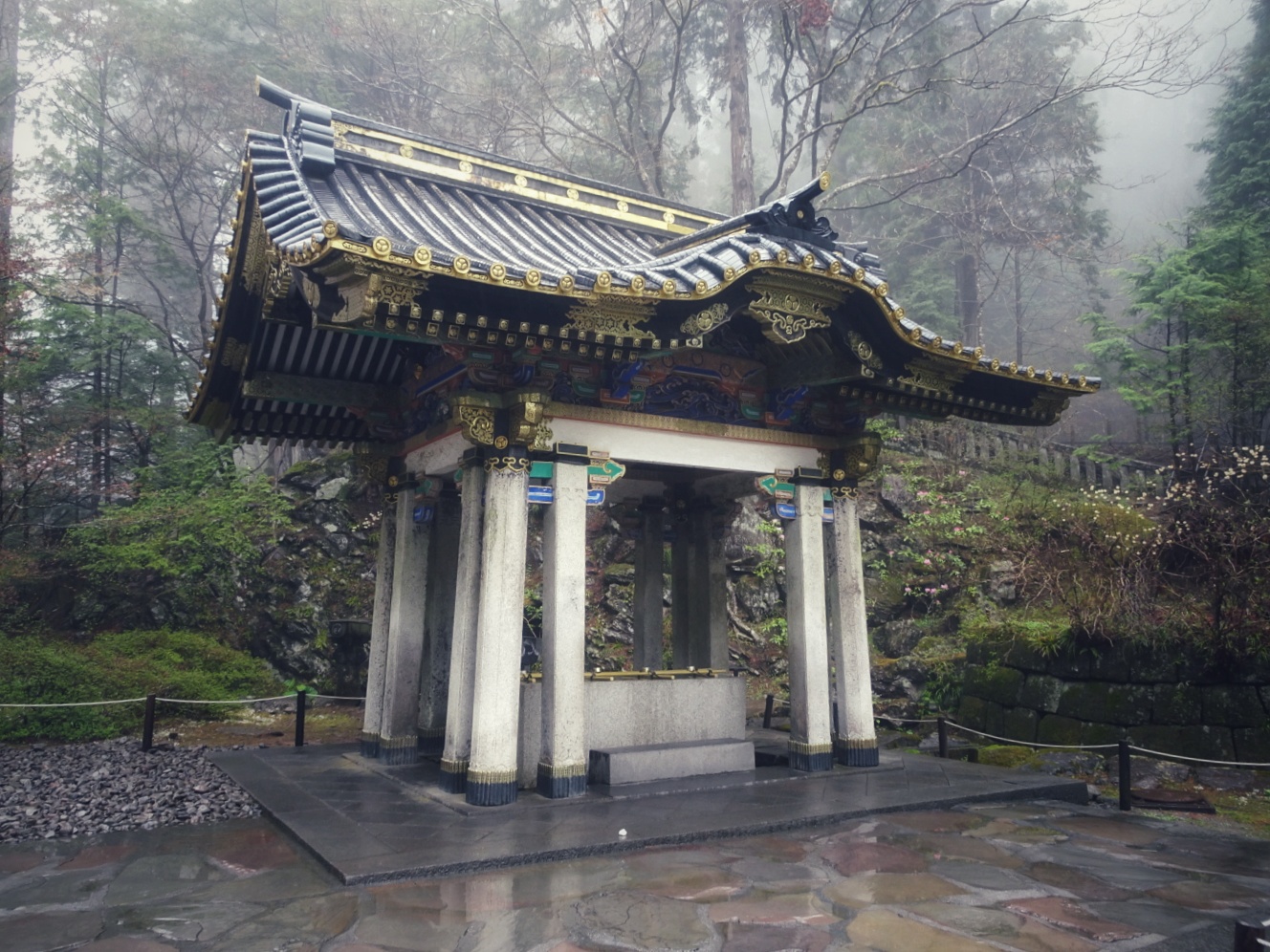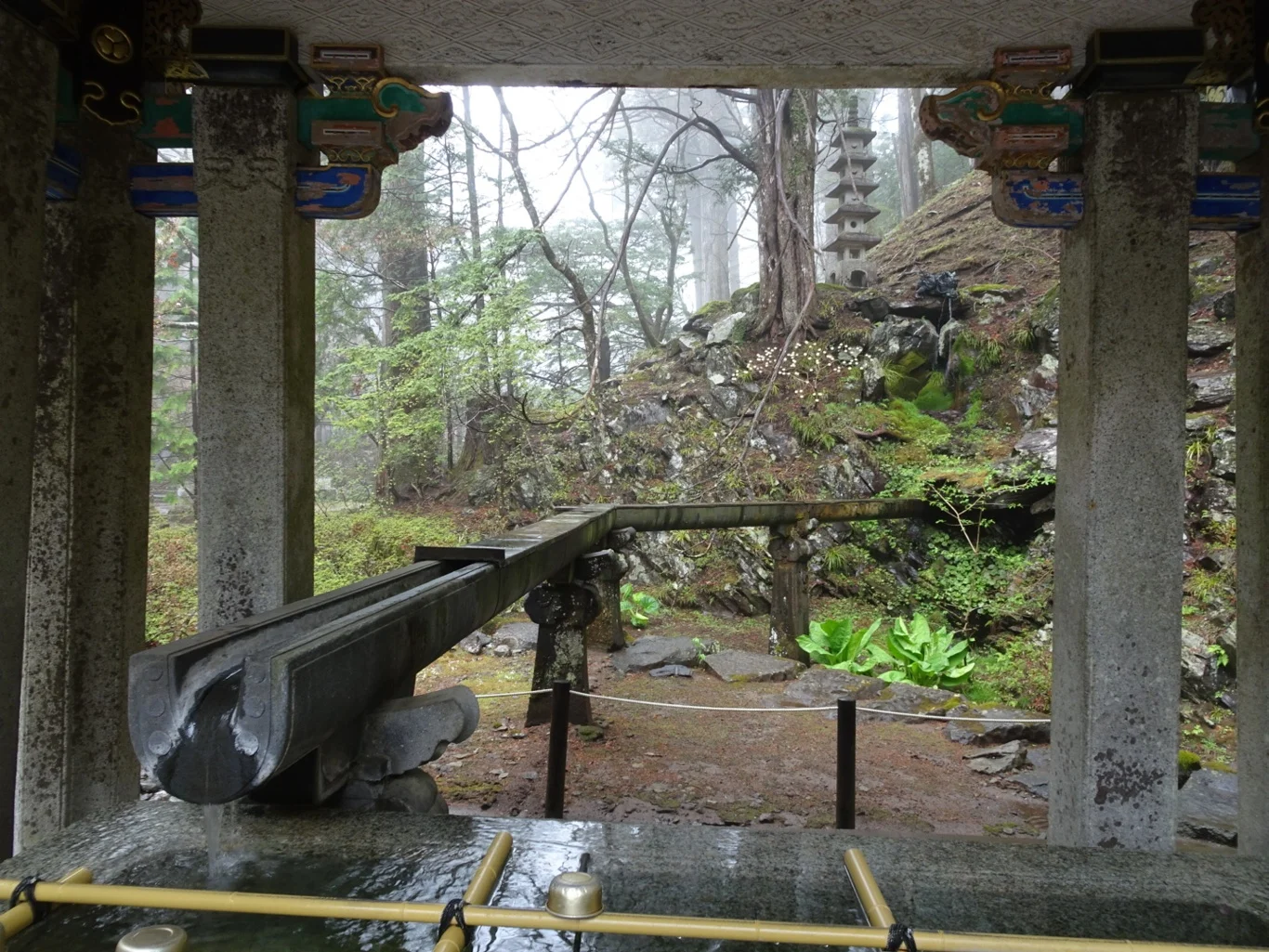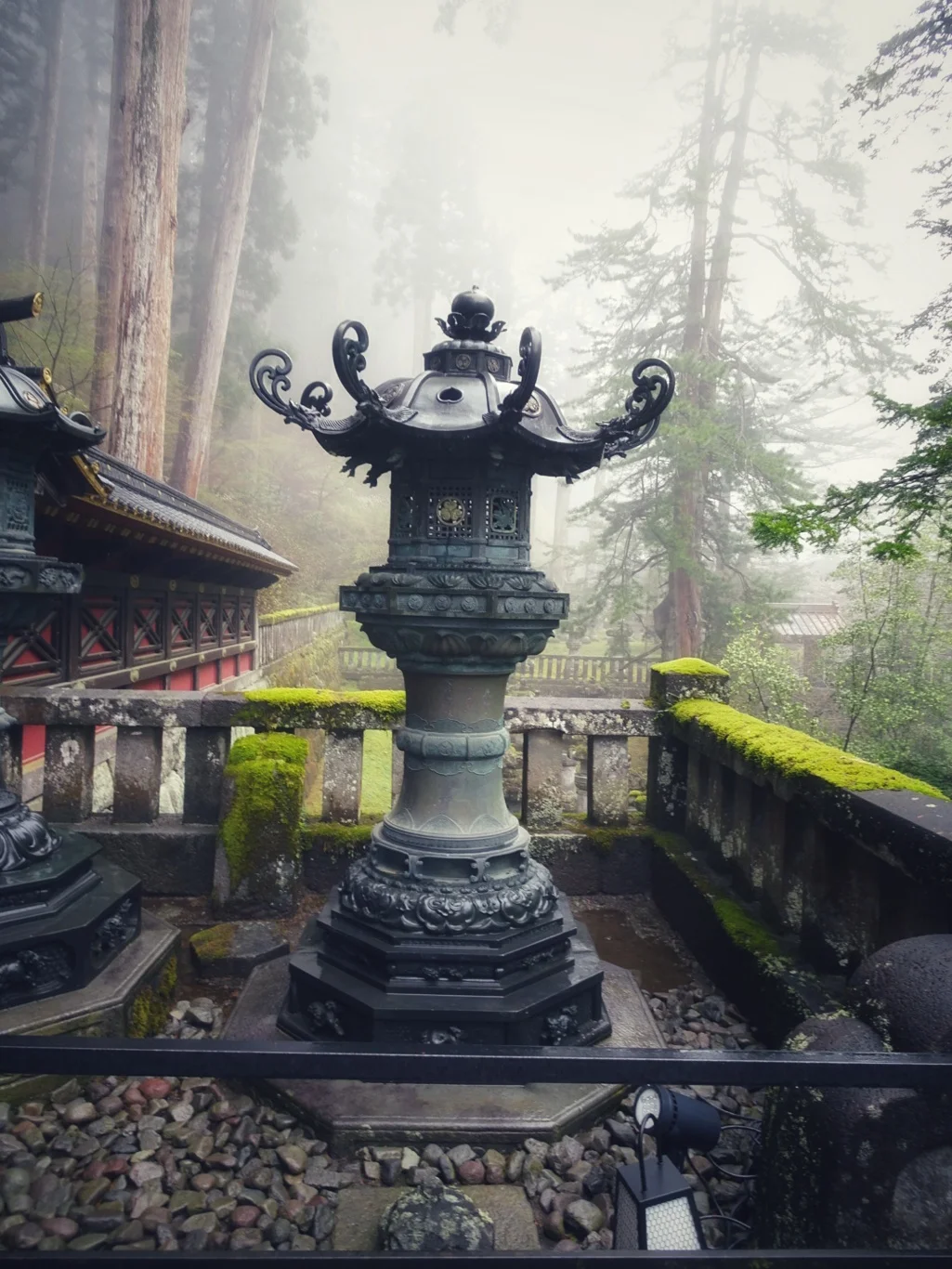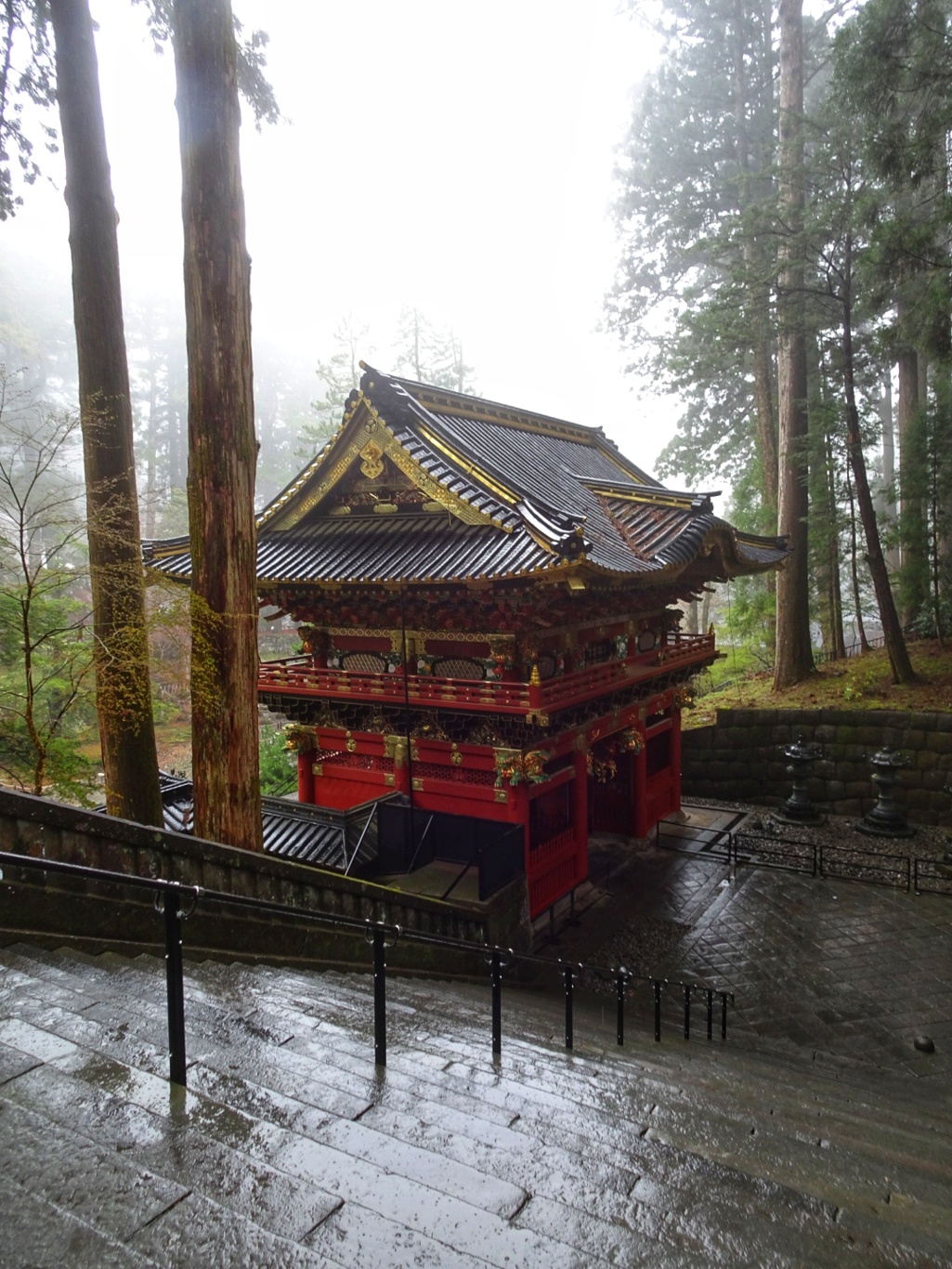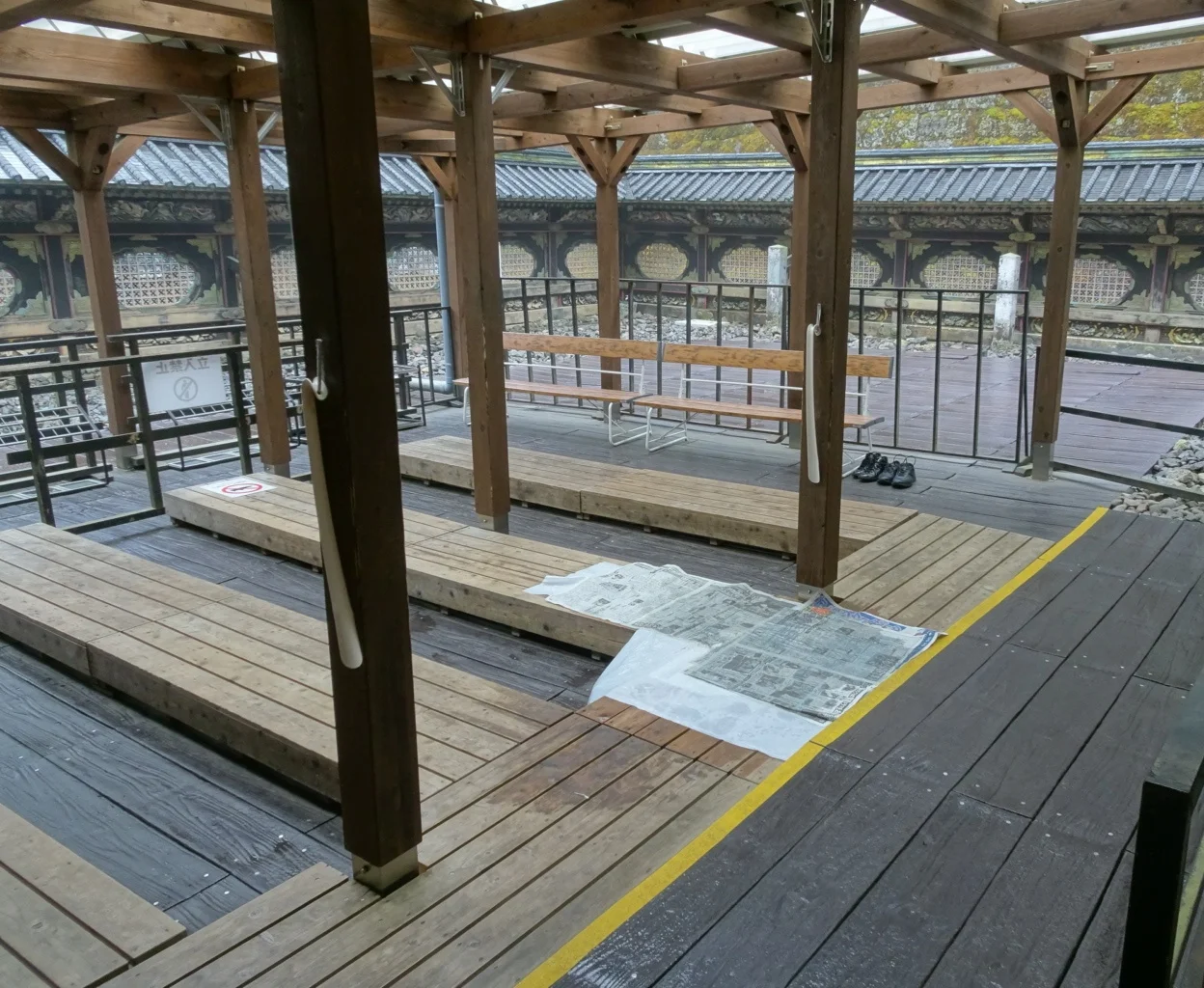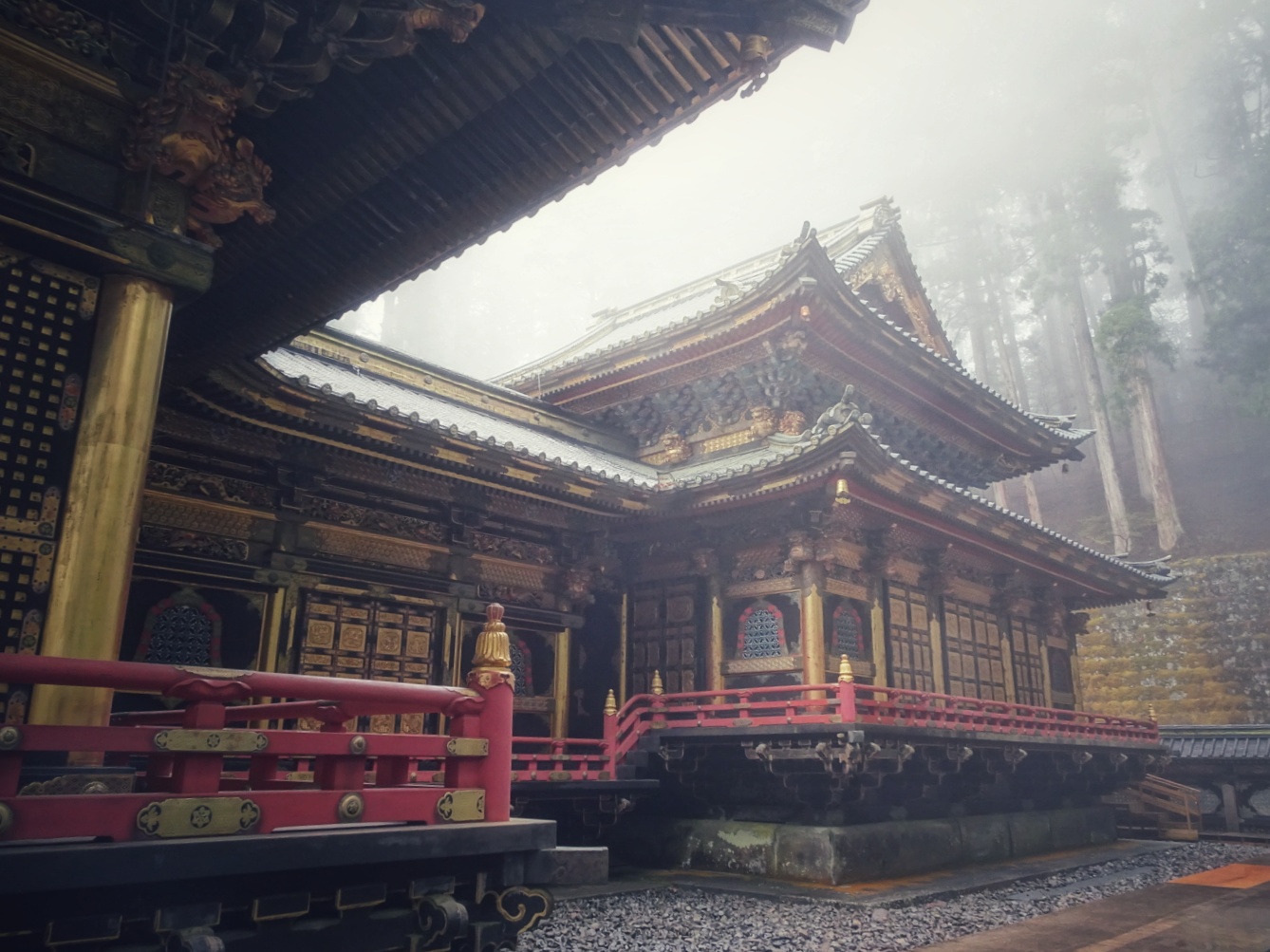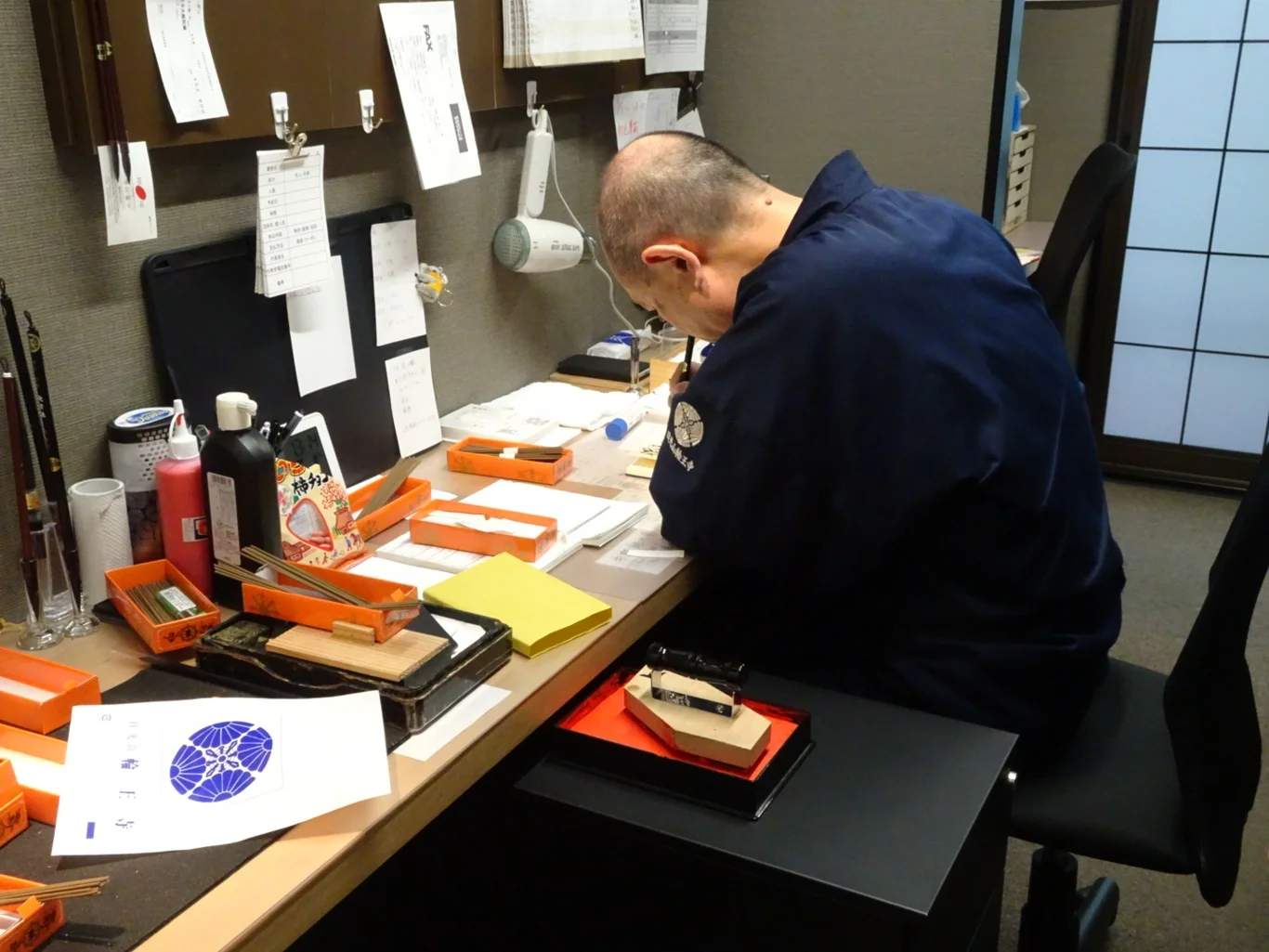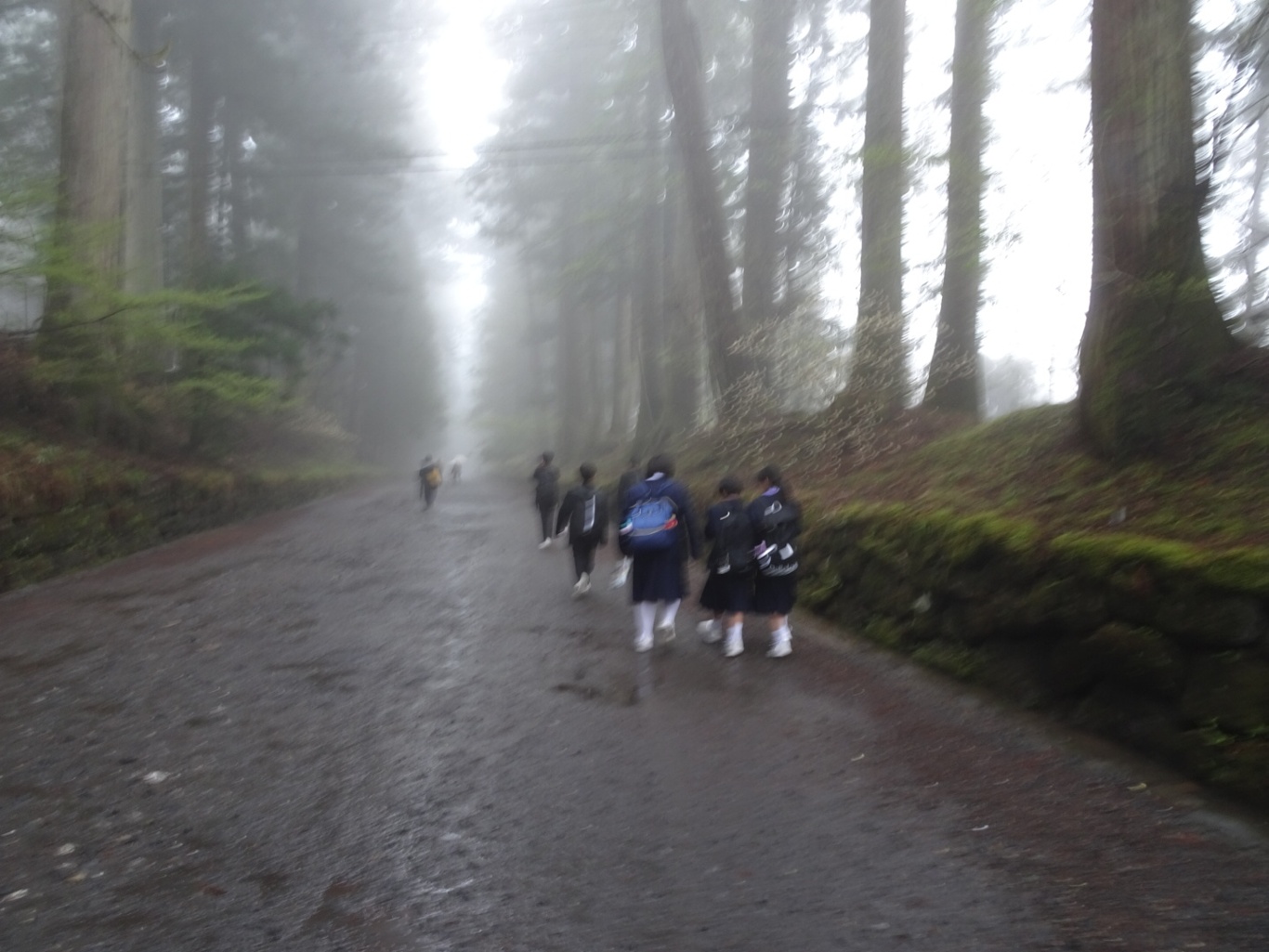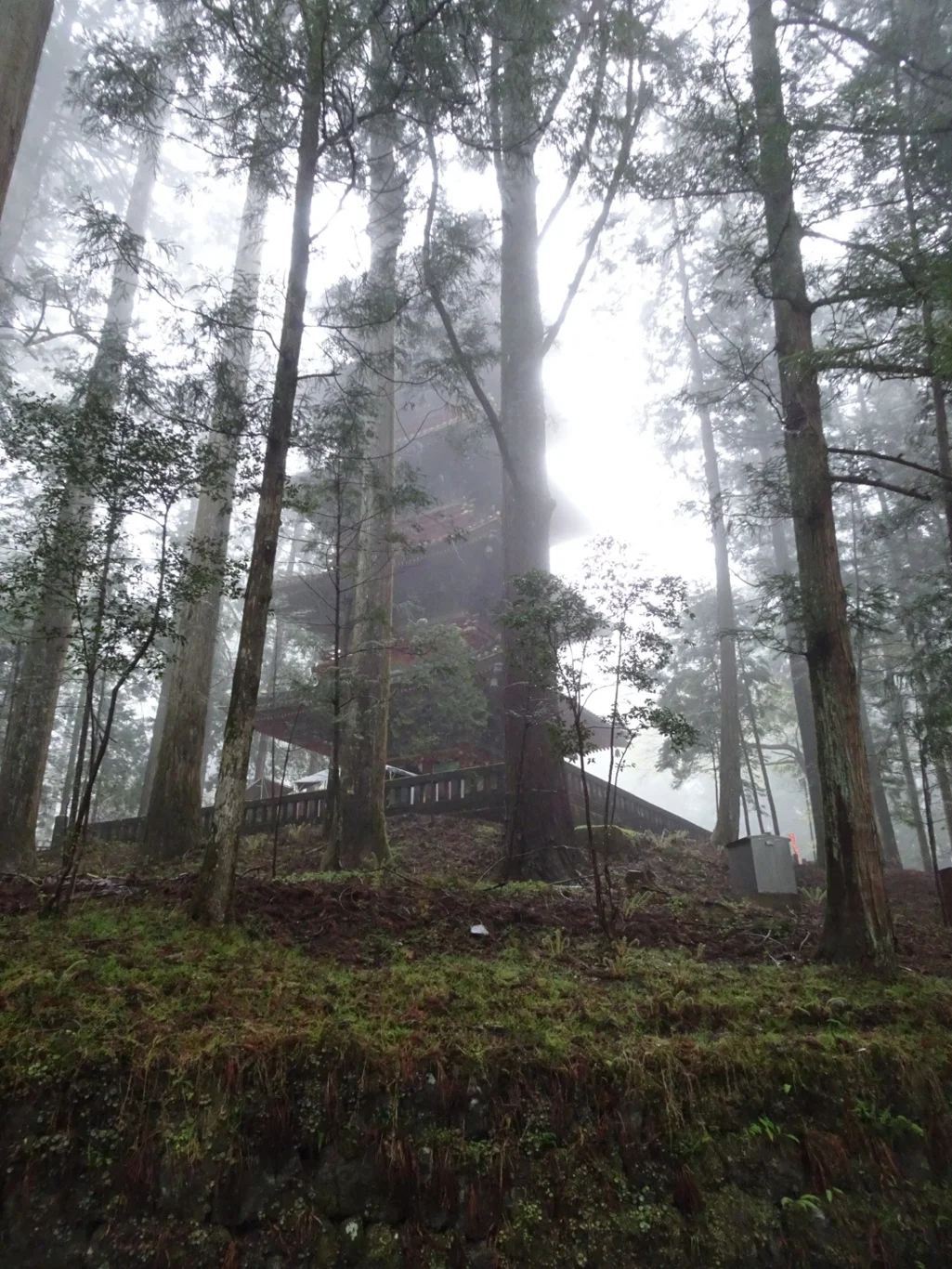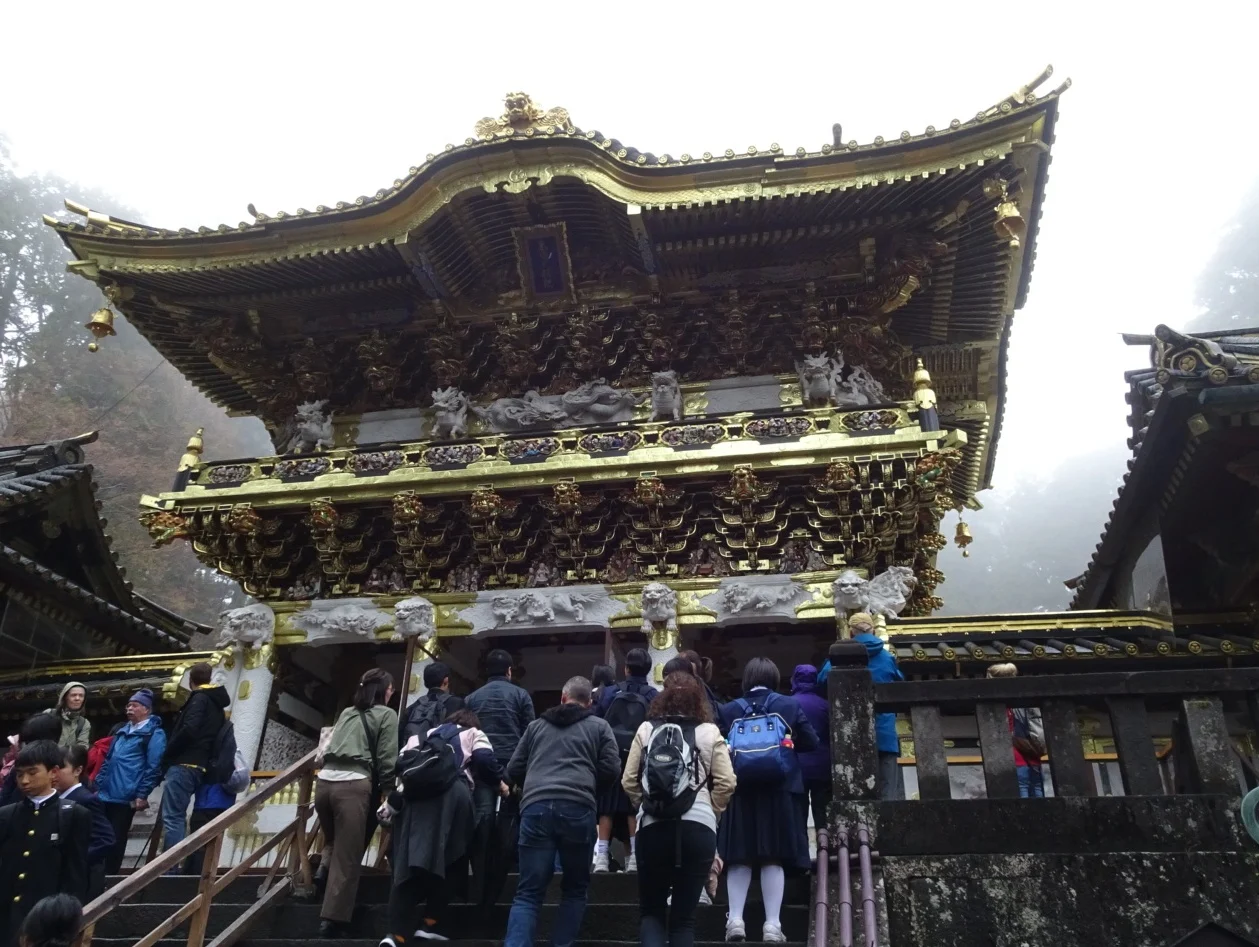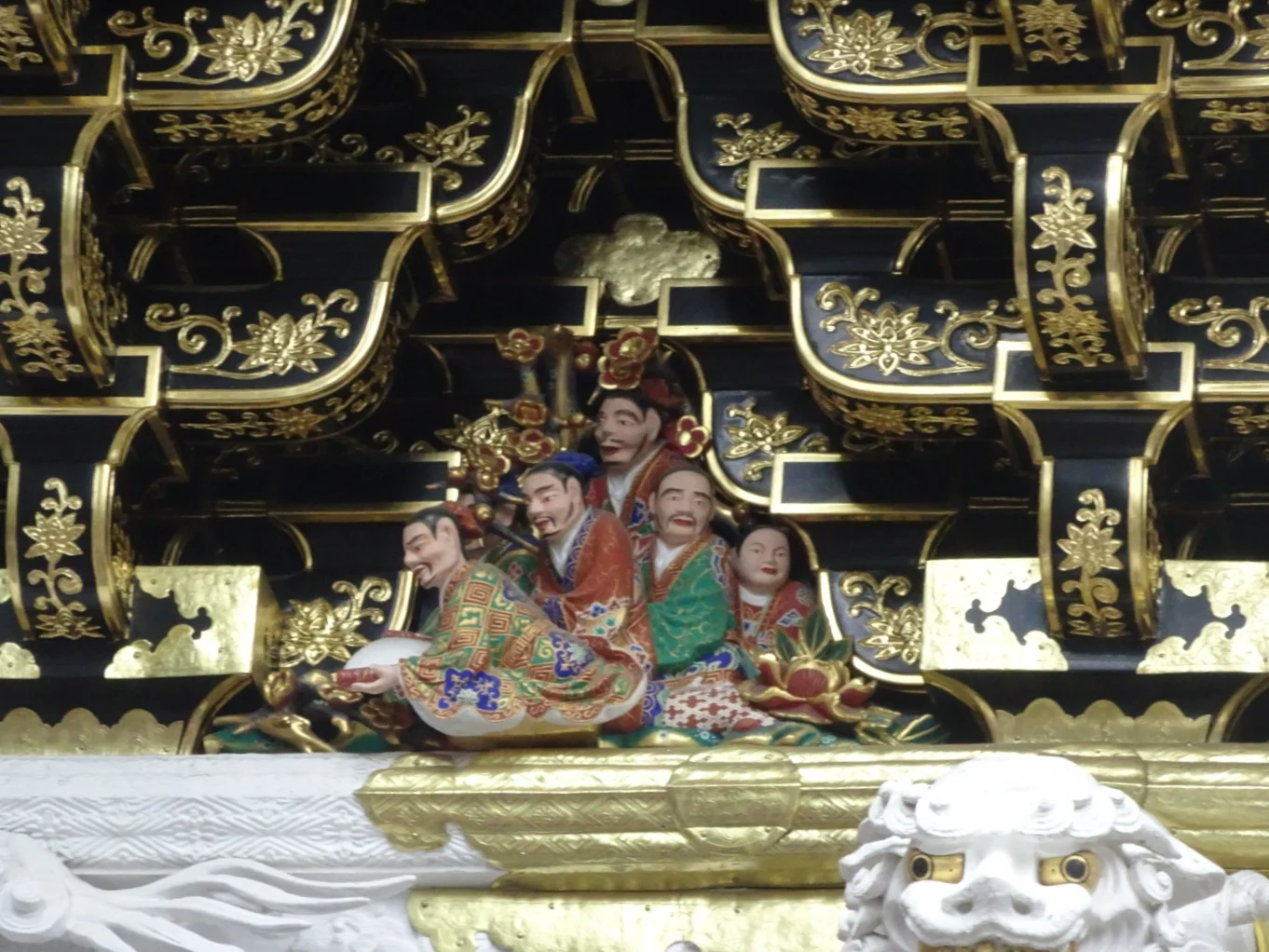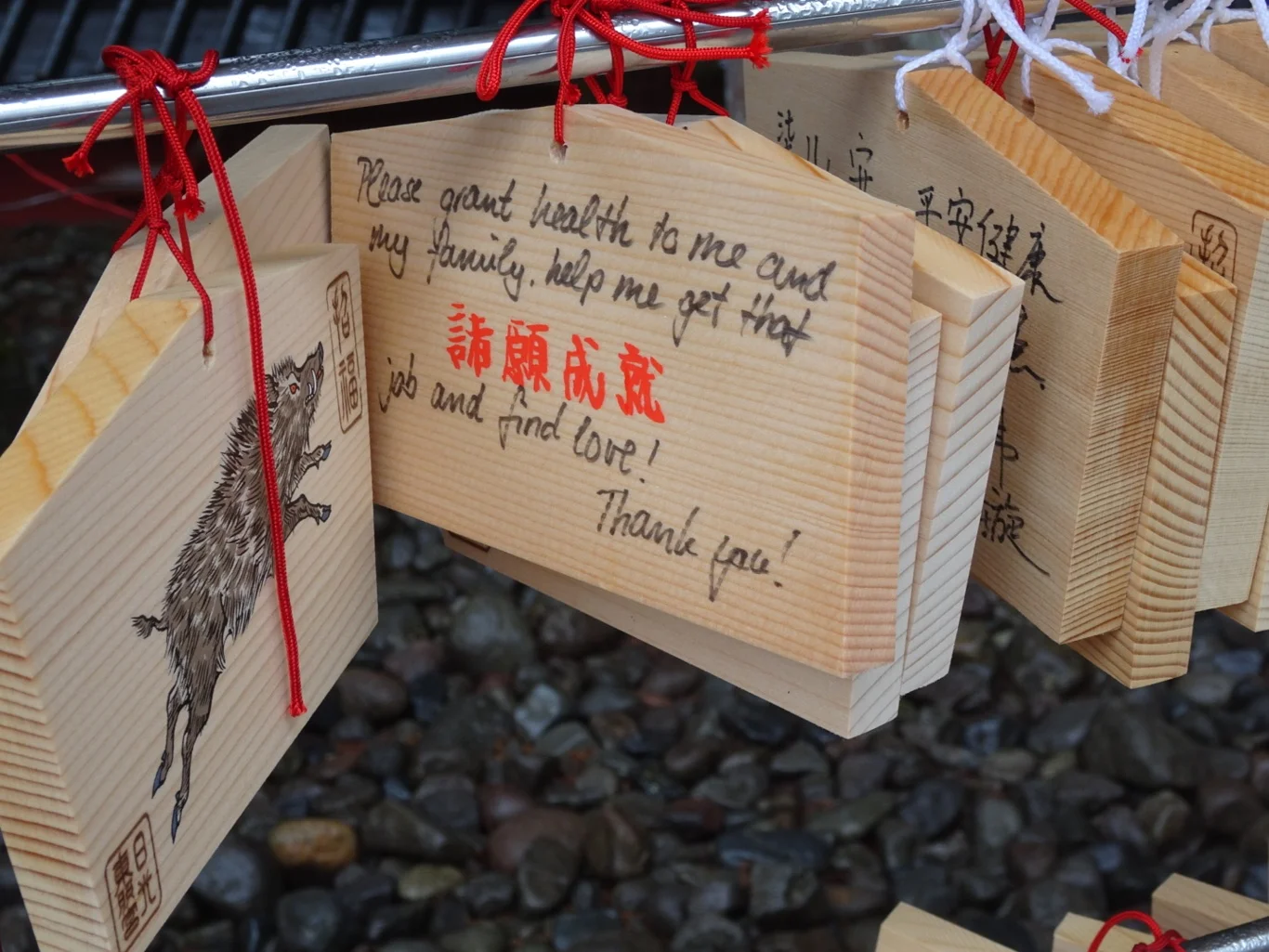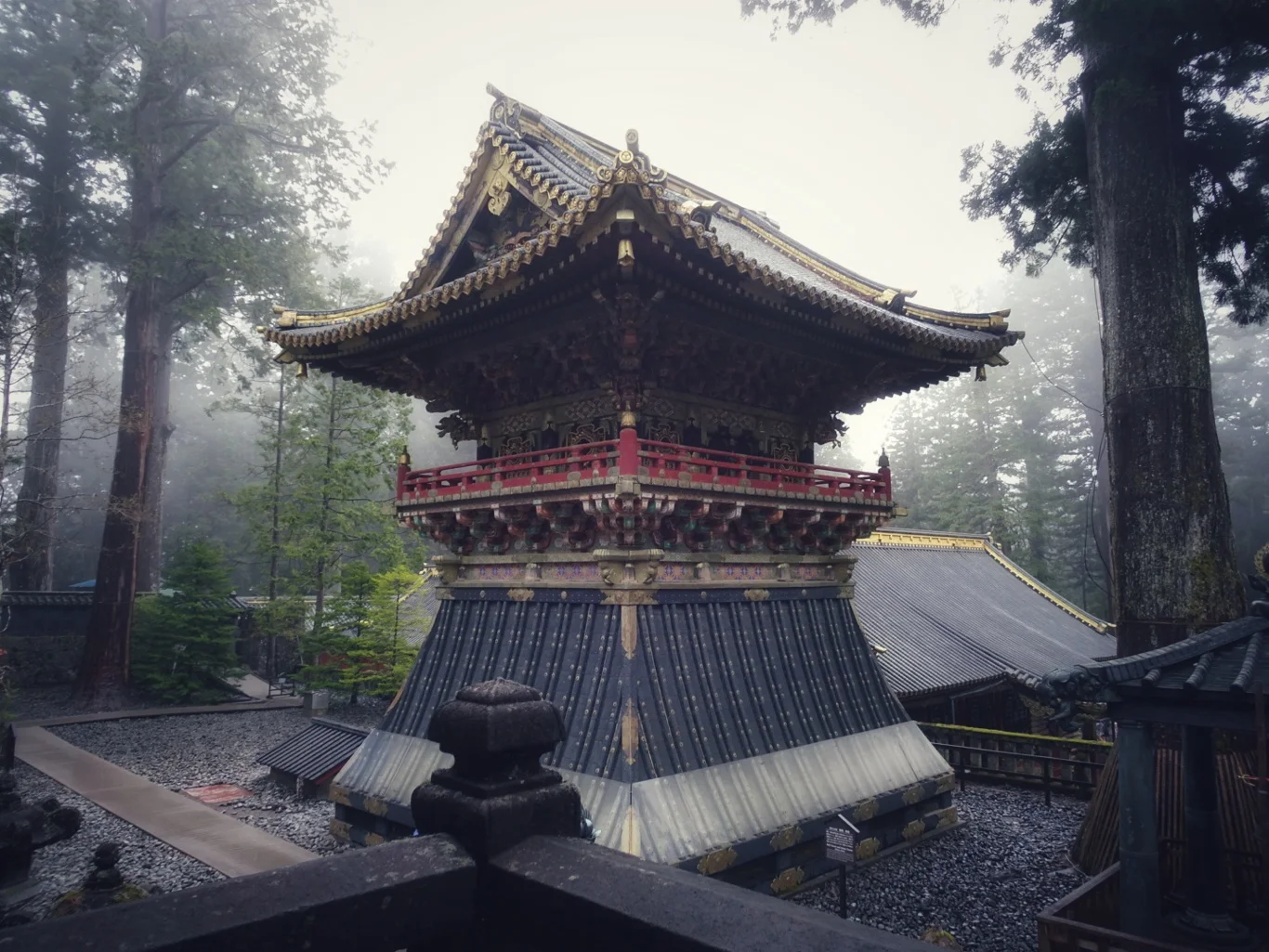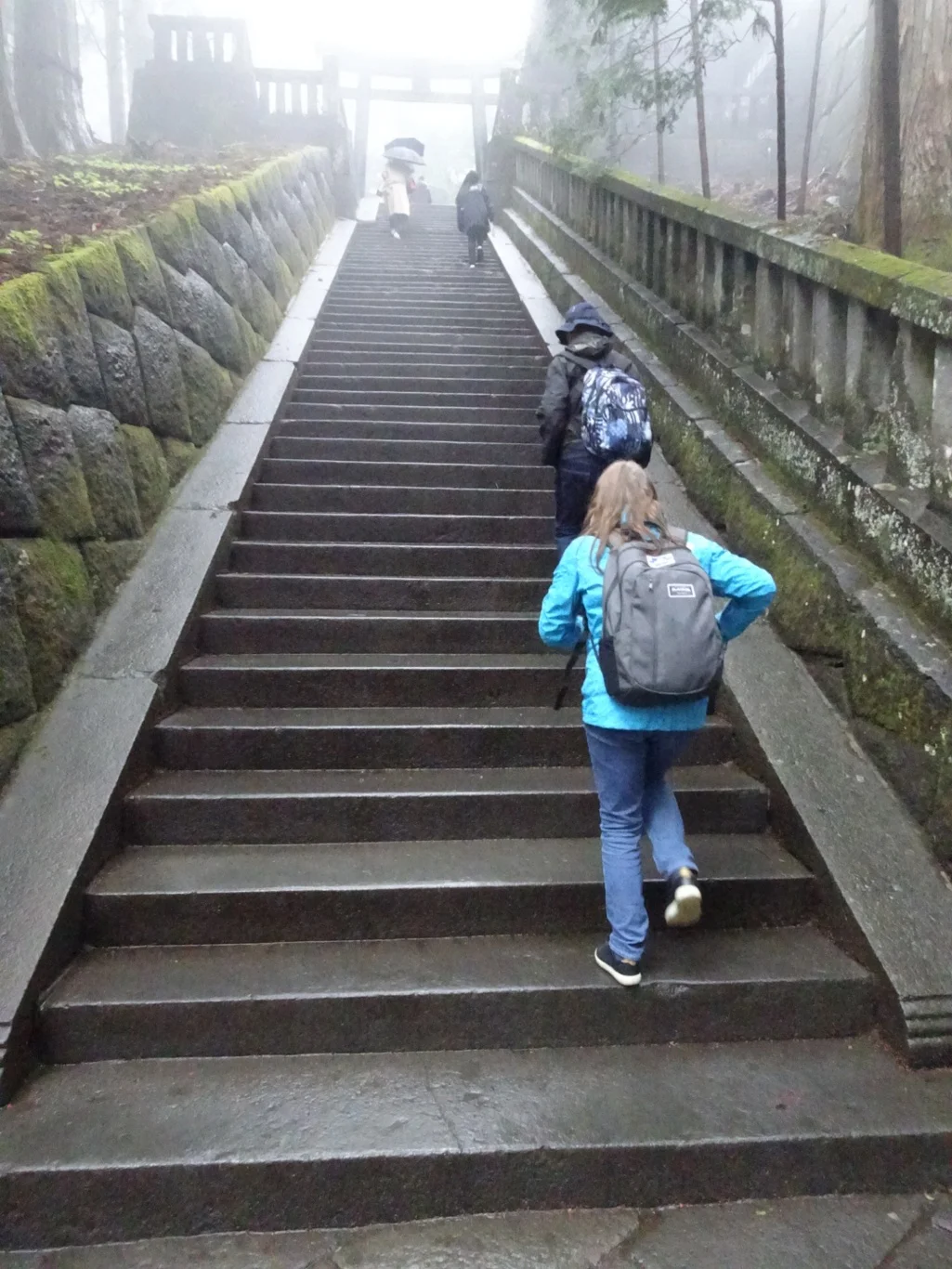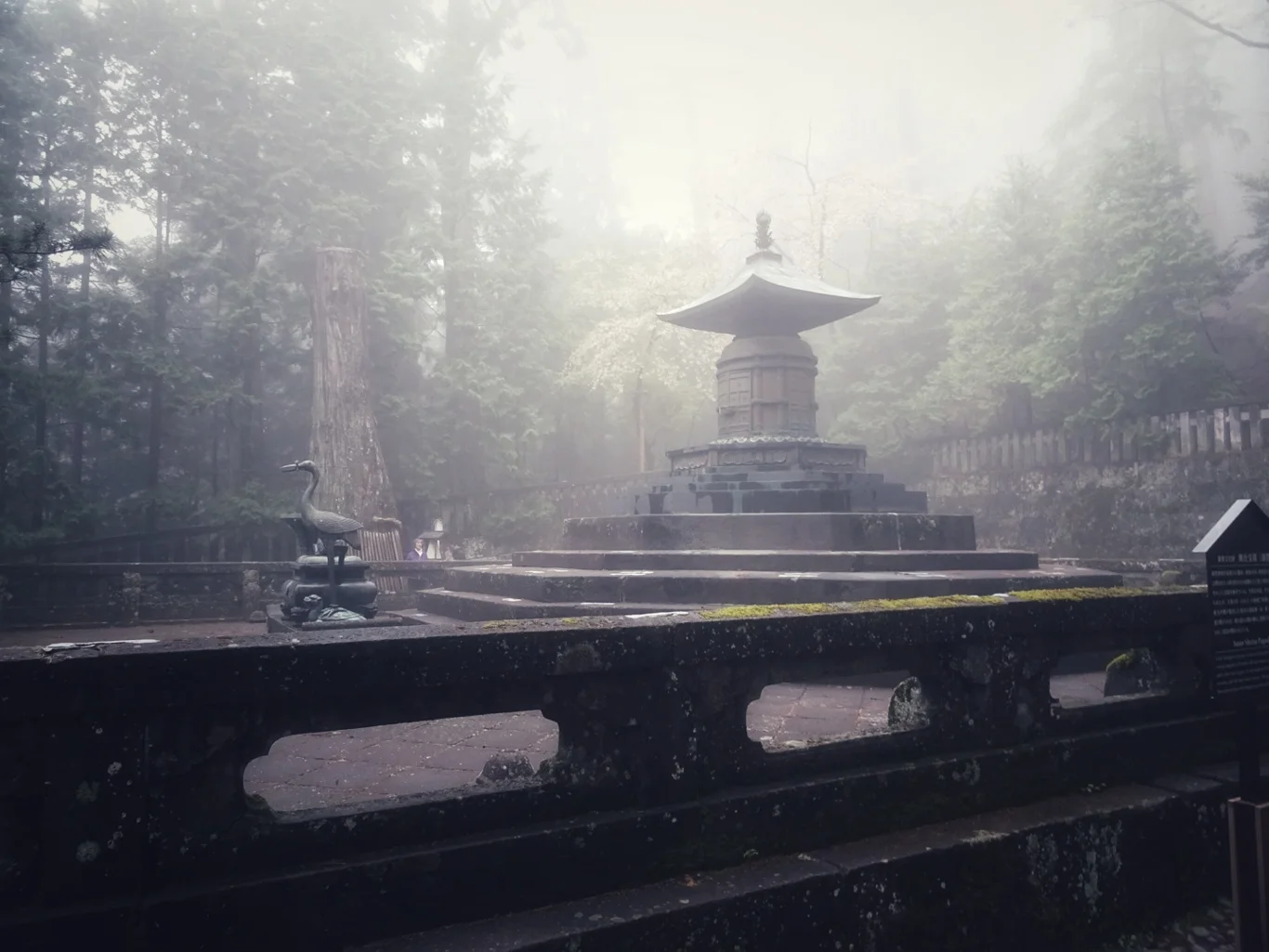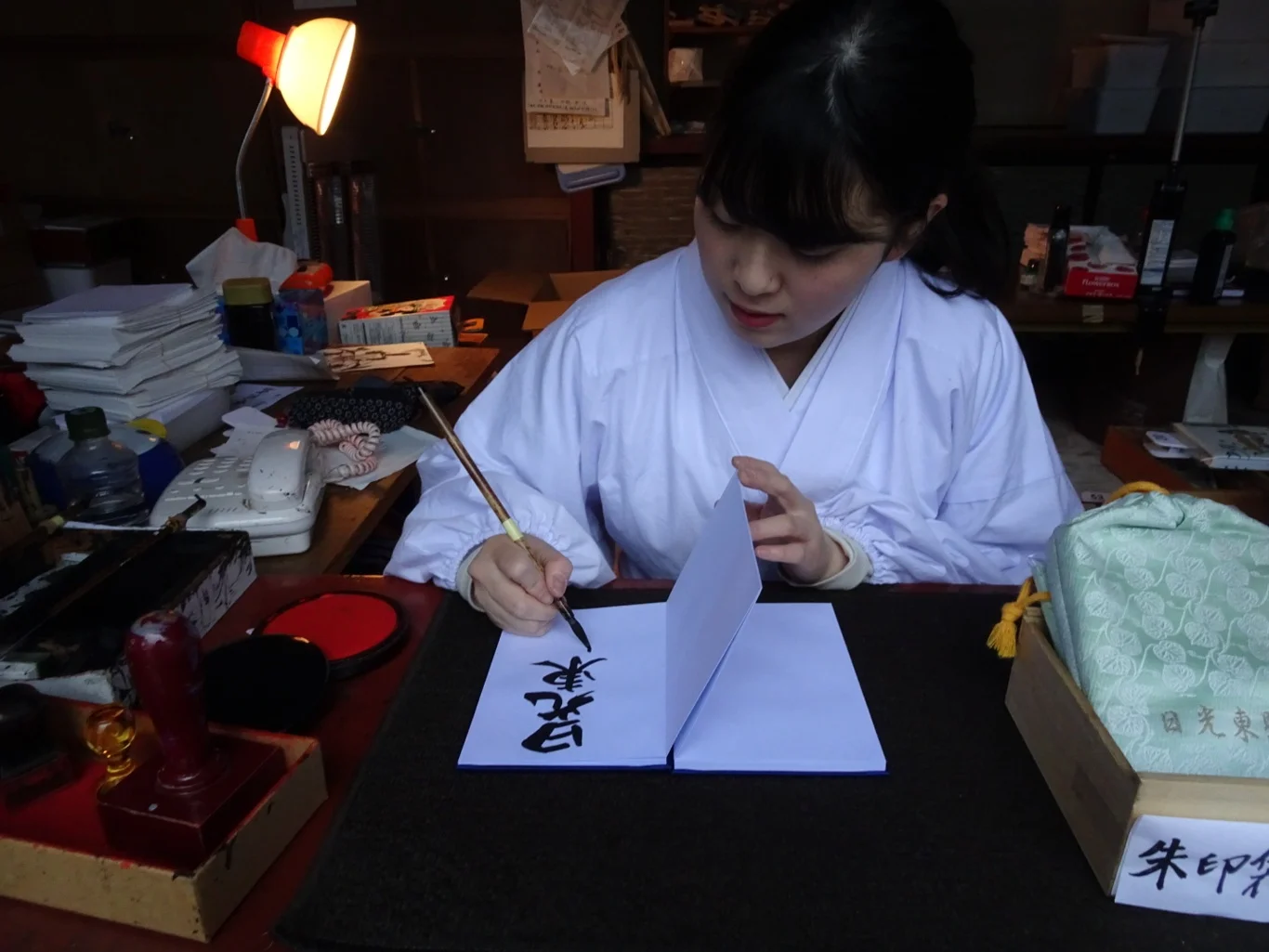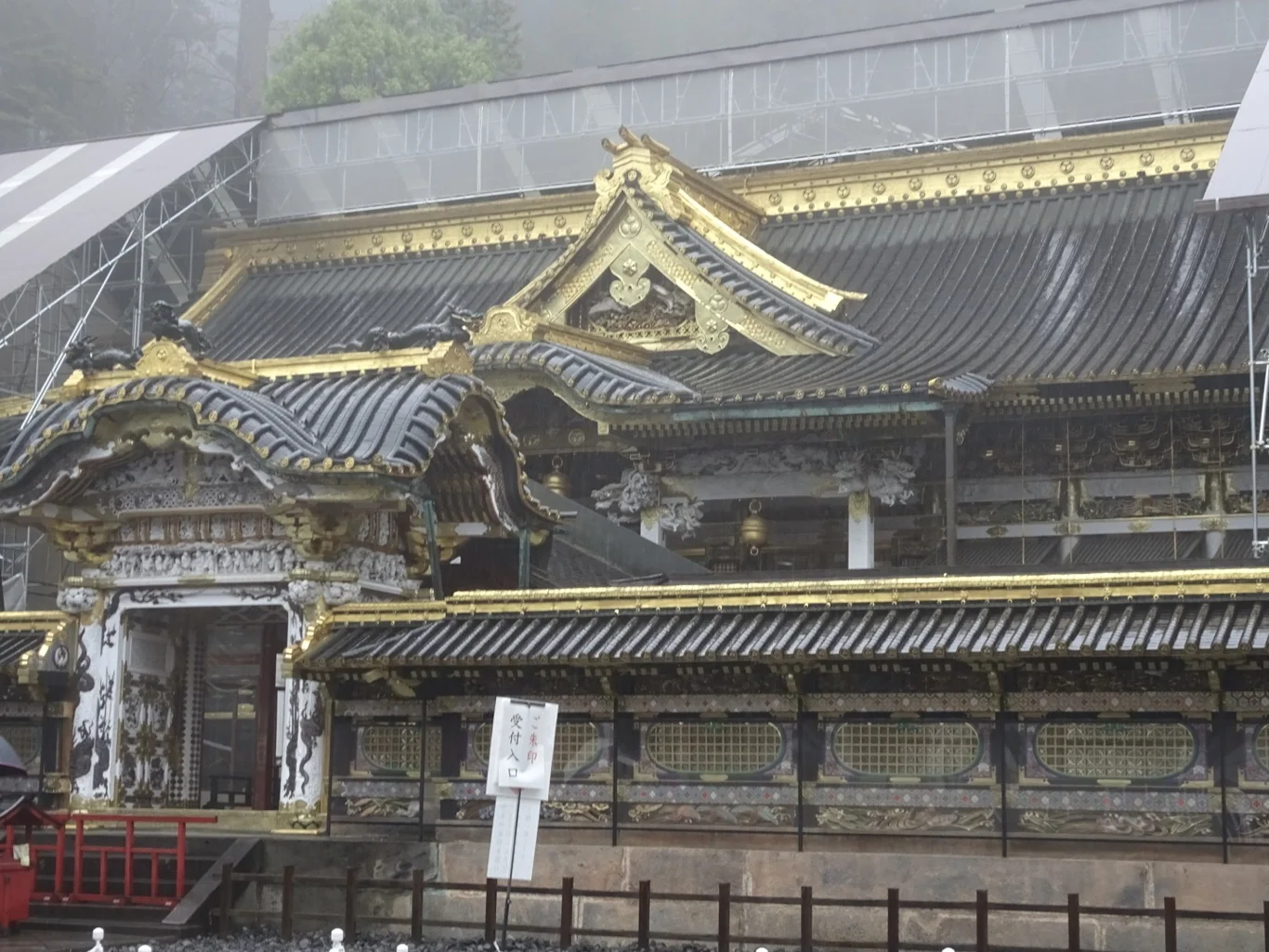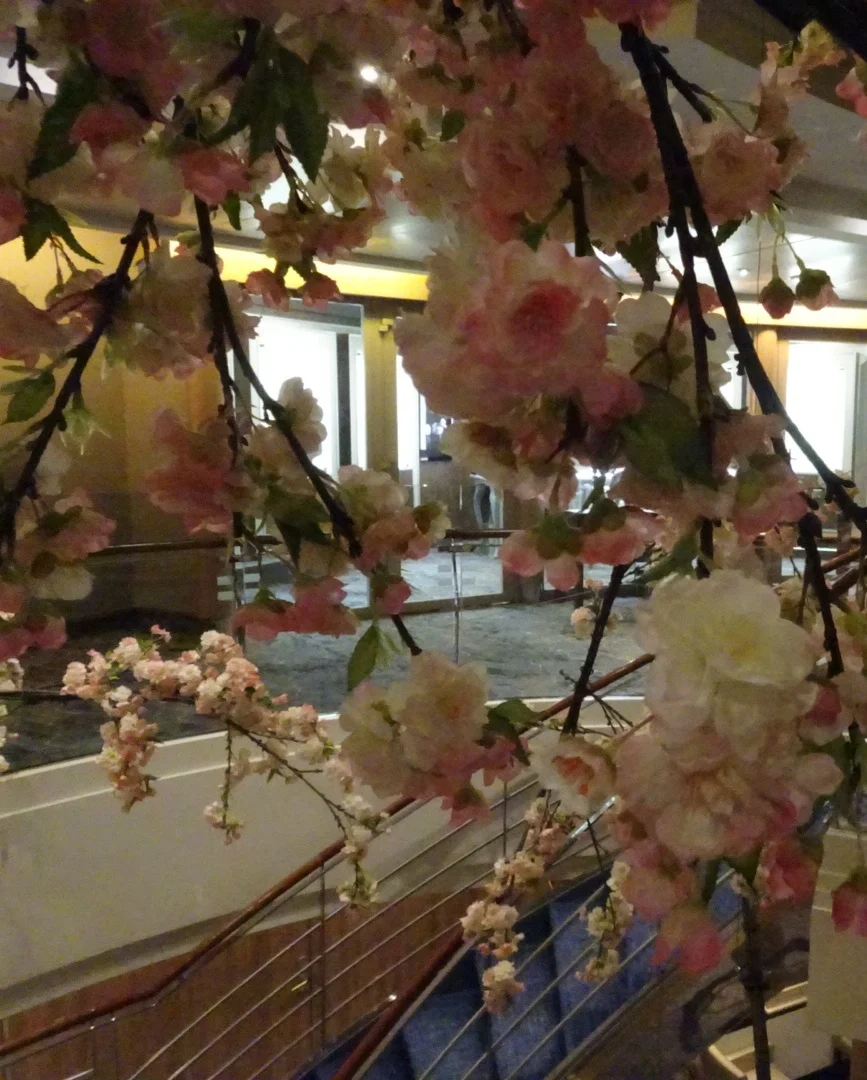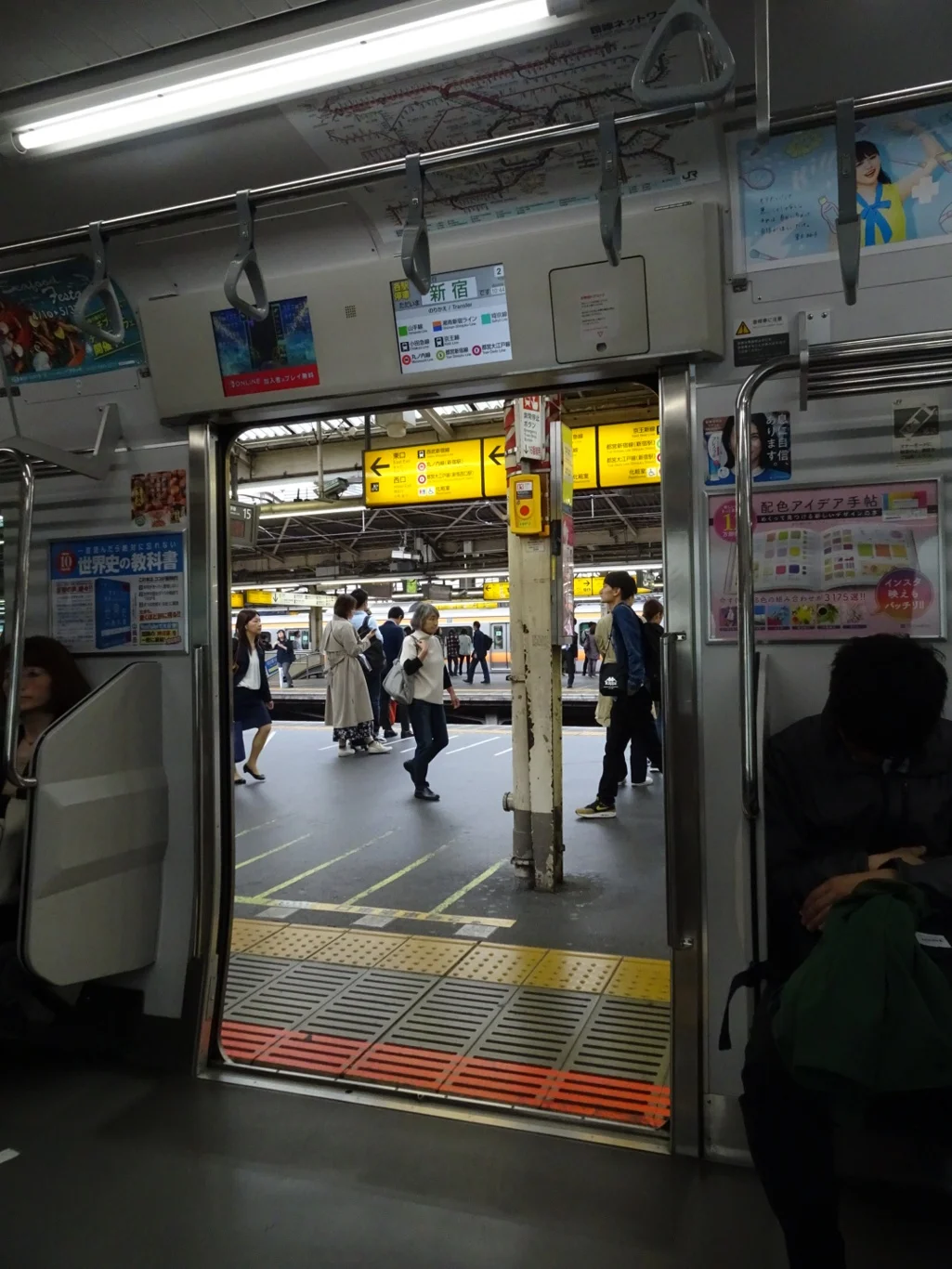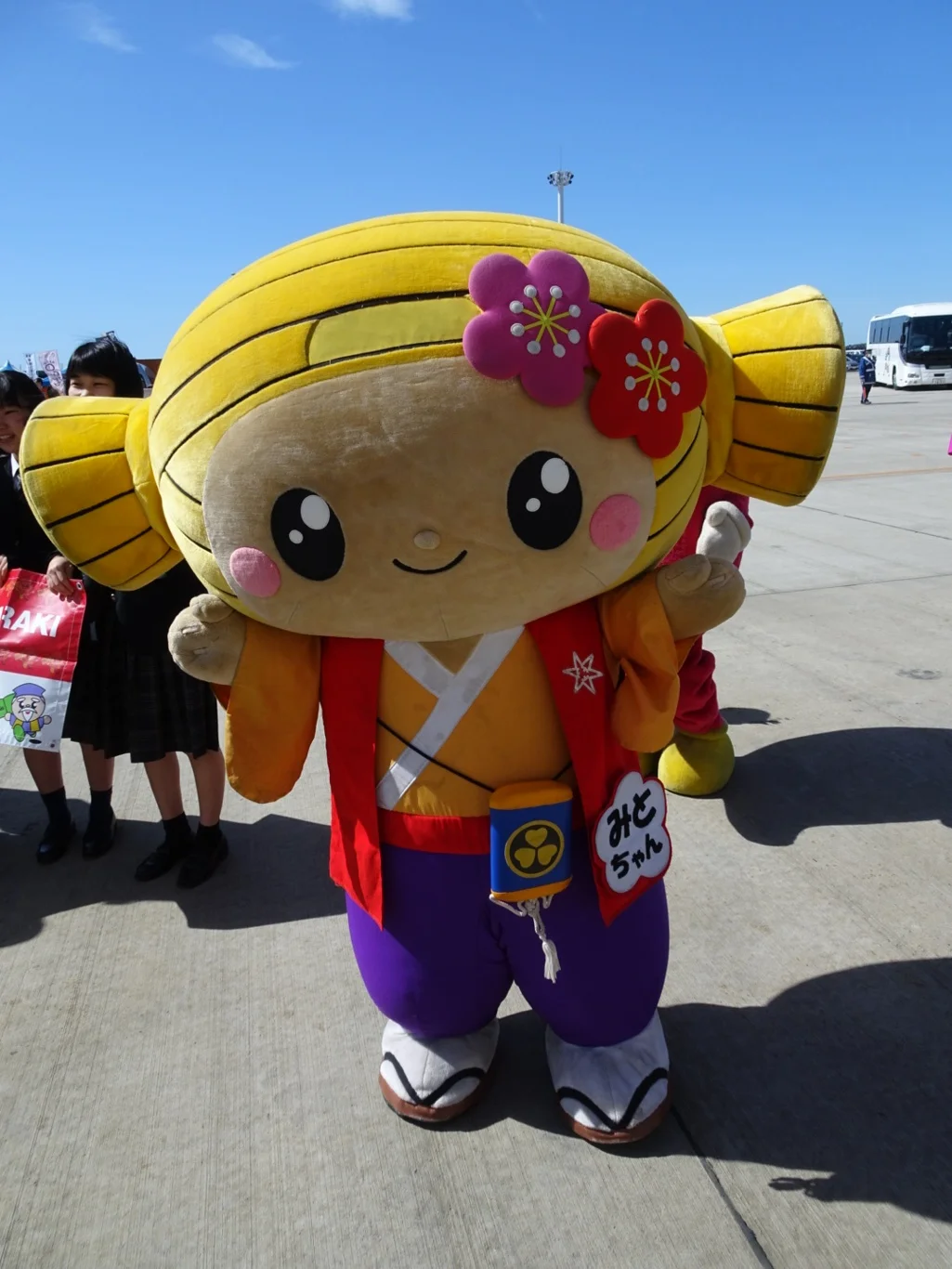Shrines and Temples
Our last day here in Tokyo and having seen the finest garden and the most authentic castle, it seemed right to visit the World Heritage shrine complex at Nikko. Rather than go into details of the importance and the history, I’ll simply suggest you follow the link.
The Yamanote line was as busy as we’ve experienced it this morning, the trains packed almost to scary levels. Even so, people queue politely and wait their turn in line for the next train - it’s just when the last few try to squeeze onto an already full to bursting train that they appear to lose their sense. I watched as one chap, determined to make it onto this particular train (even though the next would be no more than five minutes away) turn around and back into the crowd standing in the doorway and give an almighty great shove backwards as the doors closed. I am sure his whole body was tightly pressed against the door - and presumably everyone else inside.
We were catching the Shinkansen to Utsunomiya, then changing to a local train to Nikko, a journey of around an hour and three quarters. We watched the little rituals as usual and settled into our comfy seats for the ride.
On arrival in Nikko I found the stamp, depicting the station building, which has a surprising heritage.
It was very busy indeed when our full train arrived and so we lingered a while, visited the tourist office and equipped ourselves with a map and a day pass for the bus, feeling pleased to let the crowd go.
The visitor experience is well developed here, with clearly marked bus stops and a useful route for seeing the most in a limited time. But there are lots of visitors - mostly Europeans it seemed, for the first time this week.
As the bus climbed the steep incline to the shrine complex, the clouds became wetter and more dense. It wasn’t really raining but it was not in the least bit dry. We got out and looked around. Where to begin?
The answer was in the opposite direction from everyone else and as a result, for the first hour or more, we seemed to have the place to ourselves. We began with the shrine and mausoleum of the Grandson of the Tokagawa clan, immediately captivated by the drippy, misty, ethereal mood of the place.
The moss and the old stone seemed to bloom in this weather and contrary to wishing it were sunny and bright, we were glad to see it in these conditions.
We followed the recommended route, having the place mostly to ourselves.
It seemed perfectly suited to these conditions, don’t you agree?
My camera was working hard!
At the foot of the steps was a small fountain for washing in preparation for visiting the shrine.
Fairly typical that, in stopping to notice one thing - the cups and bamboo supports - we noticed more in the form of the lush green ferns on the hillside, the small pagoda structure and the wooden water channel bringing the water over to the trough. Everything was so lovely, we were both captivated.
Really there were so many small details to notice. Like the little mound of stone at the foot/front of this picture. Described as a flag hole cover, there was an information board describing how they were made to cover the locations of the flag poles used in ceremonies throughout the centuries and yes, still used today. It explained how they have come to be known as turtles…and later, we saw why.
I think this area was my favourite - this collection of buildings amongst the trees with hardly a soul around must count as one of the most special places.
The shrine itself was approached by a flight of steps
Once at the top, we had to take our shoes off to go inside. Lucky there was somewhere dry to put them, wasn’t it? (And we hoped we’d be able to find them again when we came back later)
No photos inside, so you’ll just have to imagine the rich red lacquer surfaces and the gold detail. After seeing the outside of the mausoleum, we headed back down to another shrine - this one a working place of worship where the monks were offering to inscribe a shuin - a rather more serious interpretation of my rubber stamp “thing”. These shuins are inscriptions collected from temples and shrines and from that first visit to Kyoto in 1994 I have been glad to watch as the expert calligraphers inscribe my special concertina book.
He did a fine job (I’ll photograph it when it’s light and post it here) and there was a good deal of bowing and arigato-ing.
That was that for the Grandson Tokagawa’s place then. Now to find the Shogun himself!
It really was like something out of a fairy tale, walking through those drippy woods with a few schoolchildren!
especially when a five-storied pagoda loomed out of the trees above our heads.
The shrine and temple complex for Ieyasu Tokagawa was far more crowded, being the more important and elaborate of the set. I rather liked these storehouses, which to me looked like vertical squeezeboxes!
Up the steps and through the most elaborate gate we went.
Once again, loving the small details and wishing we could stand and stare a bit longer. But that’s hard to do on a set of stone steps when surrounded by others, all wanting to see and take pictures of the same details.
Here were prayer racks - both the wooden kind and the paper tied to a wire - and though it seems wrong to comment on someone’s prayer, I wonder if you’re thinking along similar lines to me?
I’m sure we read the purpose of each of these structures but for now, let’s just admire them for what they are!
Beautiful.
I climbed a few of these stone steps towards the mausoleum before spotting the sign “207 steps to the top” and turning right around again. Thankfully, my Hero continued up them, my camera in his hand, and so we can all see what he saw.
The final resting place of Ieyasu Tokagawa, Shogun from the early 1600s - the Shogun who started it all.
Not only that, but he also spotted evidence that the information we’d read about the “turtles” (flag pole covers) was accurate too - visitors do indeed place small stones in particular places around the domes to create small turtles, from which they get their name!
Meanwhile, I was having another shuin inscribed in my book, this one from the shrine of Ieaysu Tokagawa himself. Lovely!
As we waited for the ink to dry, the heavens opened though and people scurried for cover. Thank goodness the rain held off until my hero was back down where there was shelter! We stood a while, deciding whether to wait it out or to quit whilst we were ahead. We agreed that we’d come back here in a heartbeat when next in Japan and as a result, it seemed sensible to leave something for then.
Umbrellas and raincoat hoods up, we made our way back through the woods to the bus stop.
Ta Dah!
An easy journey home - local train, Shinkansen and finally a rather calmer Yamanote train back. We hadn’t got too wet and for once, we appreciated the super-heated Japanese trains.
There’s a Japanese saying, “Never say Kekko until you’ve seen Nikko” meaning, don’t be satisfied until you’ve seen the best. I think that we can both understand exactly what it means!







